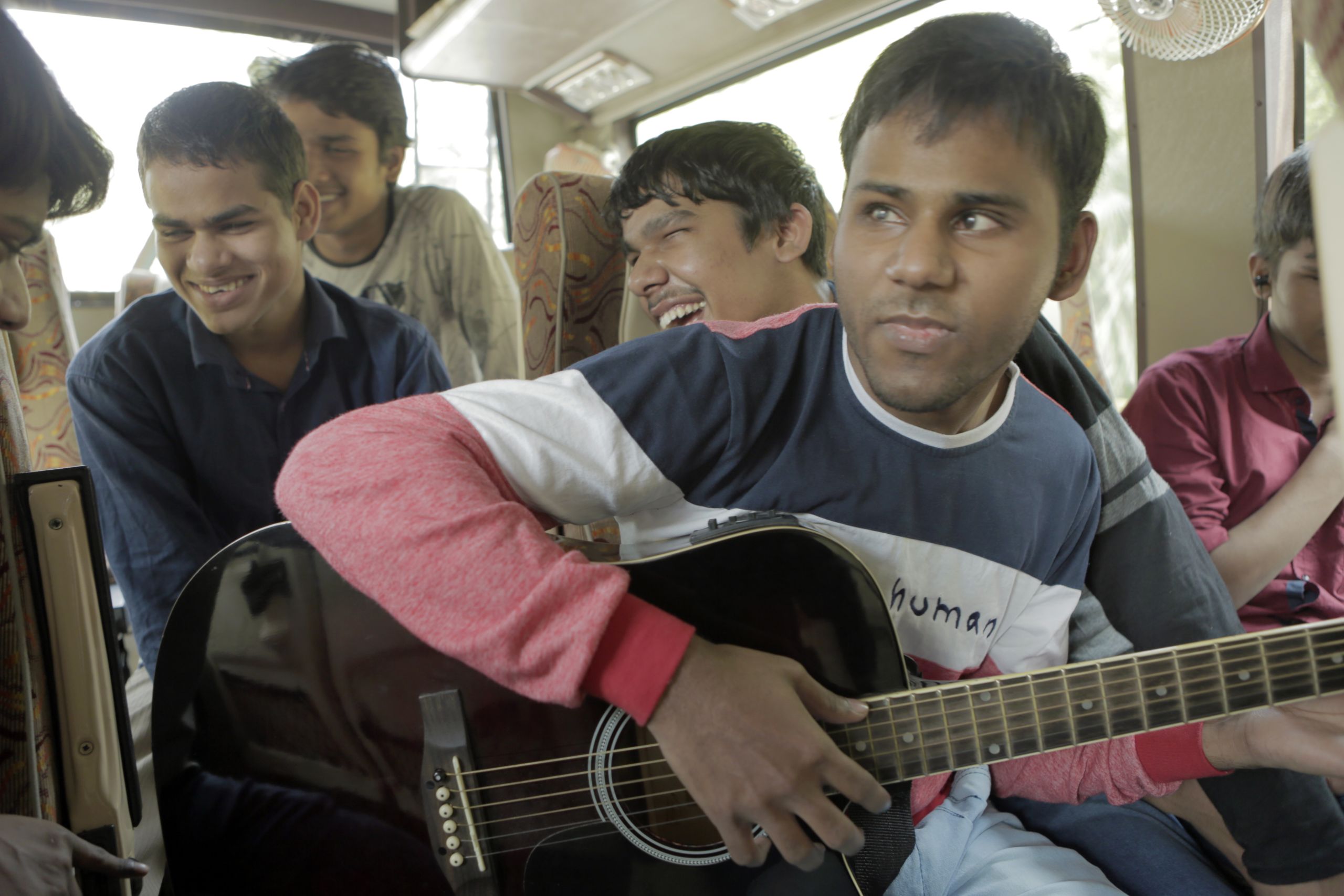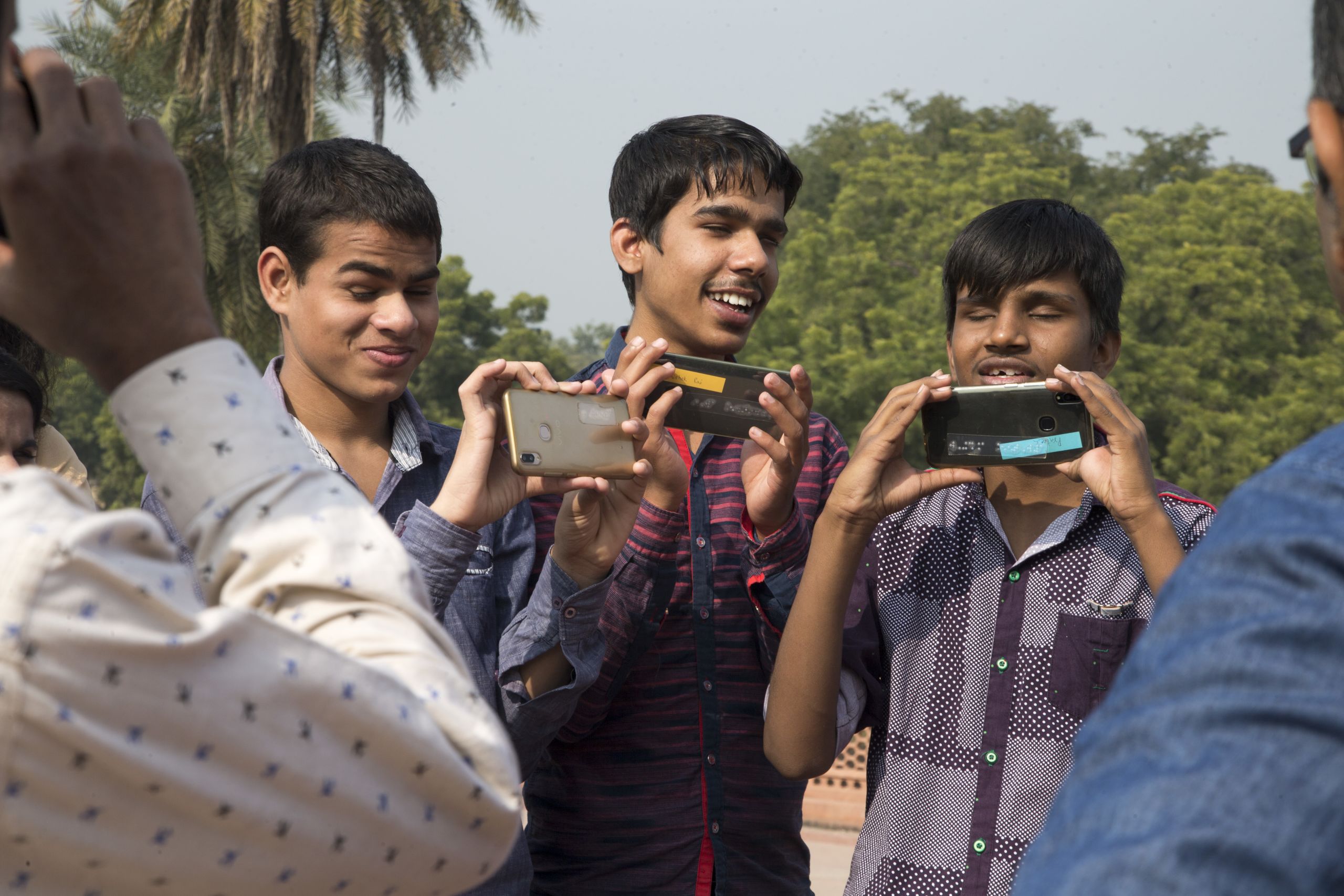
Photos by the Blind
Blind with Camera envisions a world where the visually impaired take photos, communities come together, and society can see with 'new eyes'.

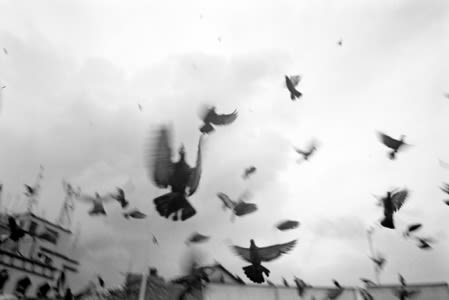
Photo by Bhavesh Patel
Photo by Bhavesh Patel
“I followed the direction of sound as the pigeons flapped their wings and flew, and took these photos based on the audio clue that more sound meant more pigeons are flying.”
- Bhavesh Patel, born blind

In 2004, Partho Bhowmick [pictured], an avid photographer, came across a photo magazine along the streets of Mumbai. In it, he discovered the work of a Slovenian photographer that would go on to impact not just his own life, but thousands of others in India.
The photographs were by Evgen Bavcar, a blind photographer who lost sight before he turned 12. For Partho, the concept of a blind person taking photographs, opened his eyes to the possibilities of what photography could be, and how it might change society.
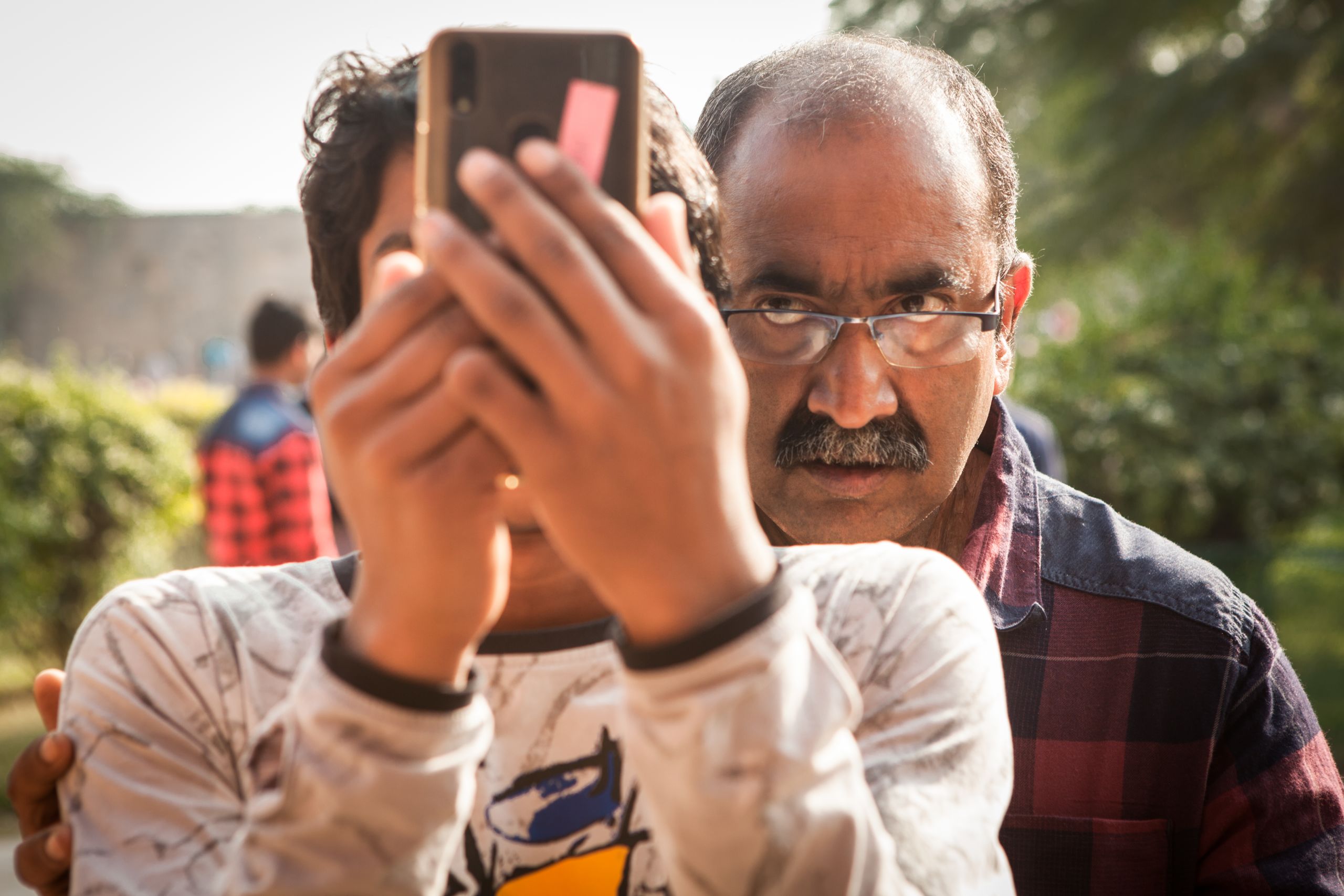
"Learning to see - perception and knowledge is common for both the sighted and the blind - only the vehicle and routes are different."
– Partho Bhowmick, See As No Other, 2015.

Inspired, Partho immersed himself in the study of blindness and visual art for nearly two years, developing techniques to teach the blind how to take pictures and express themselves visually, using other sensory skills.
In 2006, ‘Blind With Camera’ came into focus, an initiative that uses photography to enable the social inclusion of the visually impaired.
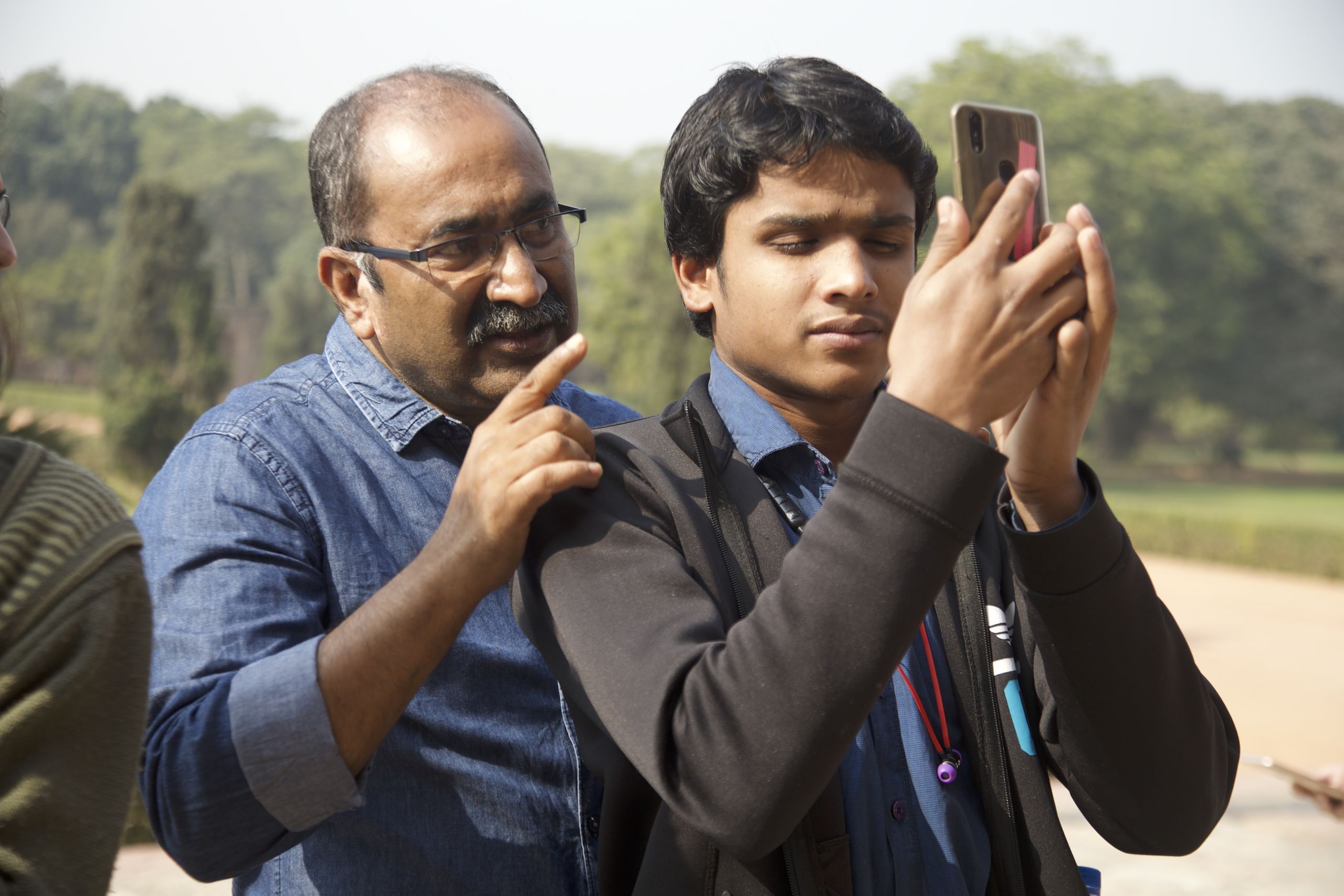
“The blind have to work much harder than the sighted to be visually aware and translate their awareness into mental images by adding layers of their memories of the senses.”
– Partho Bhowmick, See As No Other, 2015.


Photo courtesy of Partho
Photo courtesy of Partho
The first workshop had one student, but as word spread, more visually impaired participants signed up. Partho funded the workshops initially but later, corporates sponsored his initiative. To date, he has conducted workshops in the United Kingdom, Malaysia, Singapore and Greece, teaching more than 1,500 people.
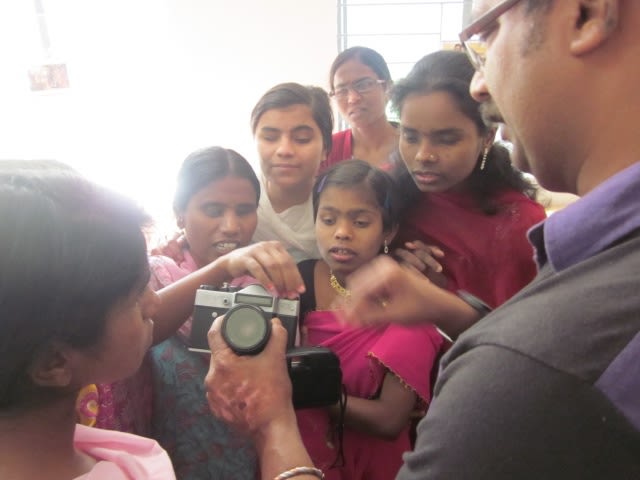
Photo courtesy of Partho
Photo courtesy of Partho
But beyond wanting to empower the visually impaired, Partho's mission was to bring about their social-cultural inclusion into mainstream society. To correct public perception about visual impairment and disabilities, by using visual art to bridge the divide between communities separated by sight.
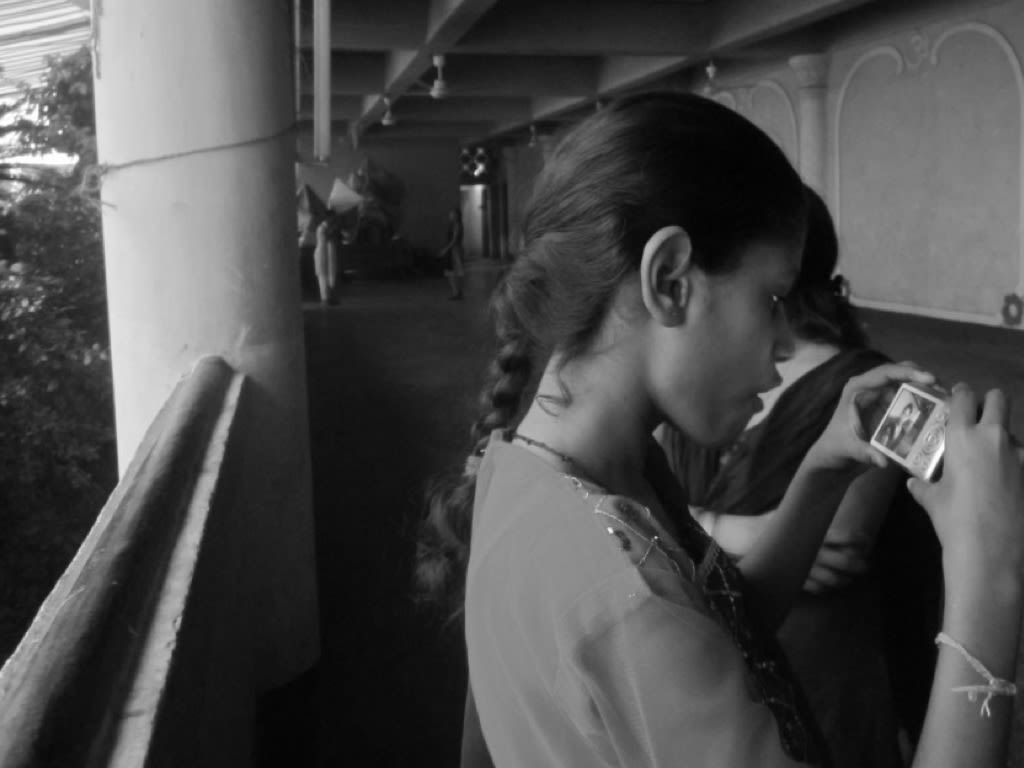
“You have diversity everywhere. You have cultural diversity, you have language diversity, and people accept those but people are not ready to accept human diversity. But they should.”
- Ayush Prakash, bilaterally blind
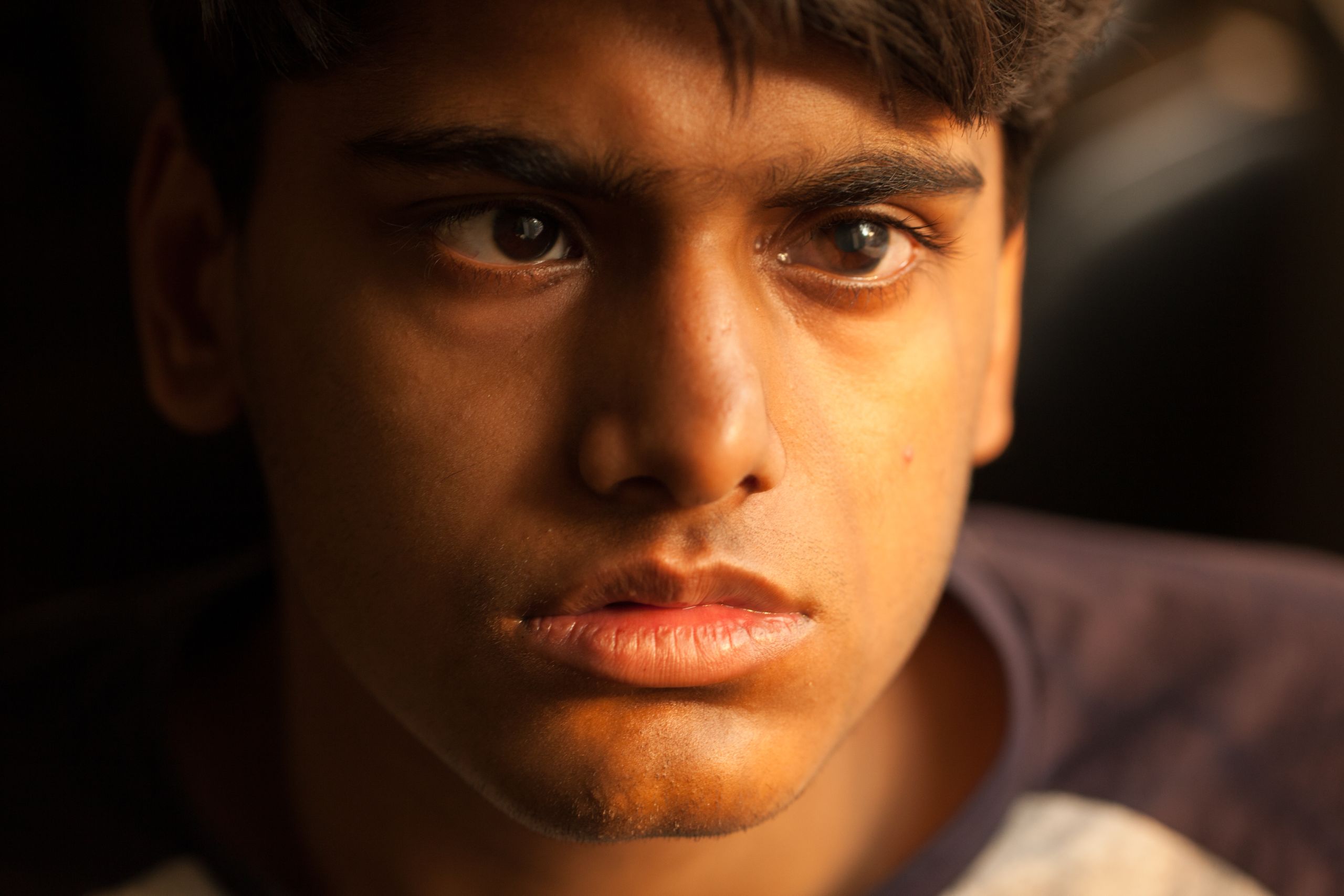
Ayush [pictured], was born with normal vision, but lost part of his sight at the age of three. Despite treatment, he never recovered his full vision.
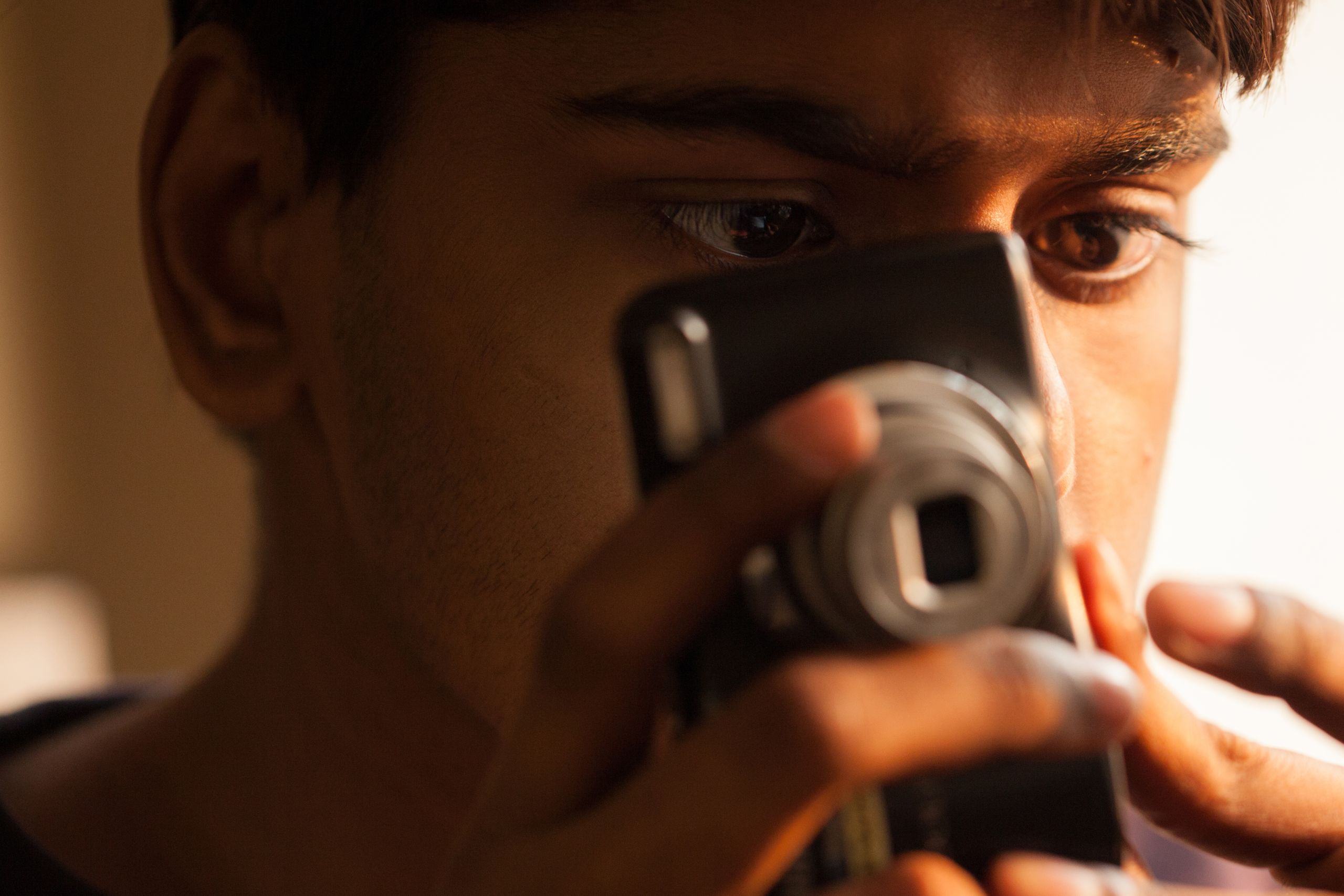
Like Ayush, there are many people in Partho's workshops who live with different types of visual impairments.
From those who are born completely blind, those who have become blind and those who have partial vision.
Understanding the different types of blindness is important for Partho as he crafts his lessons to cater to each person’s needs.
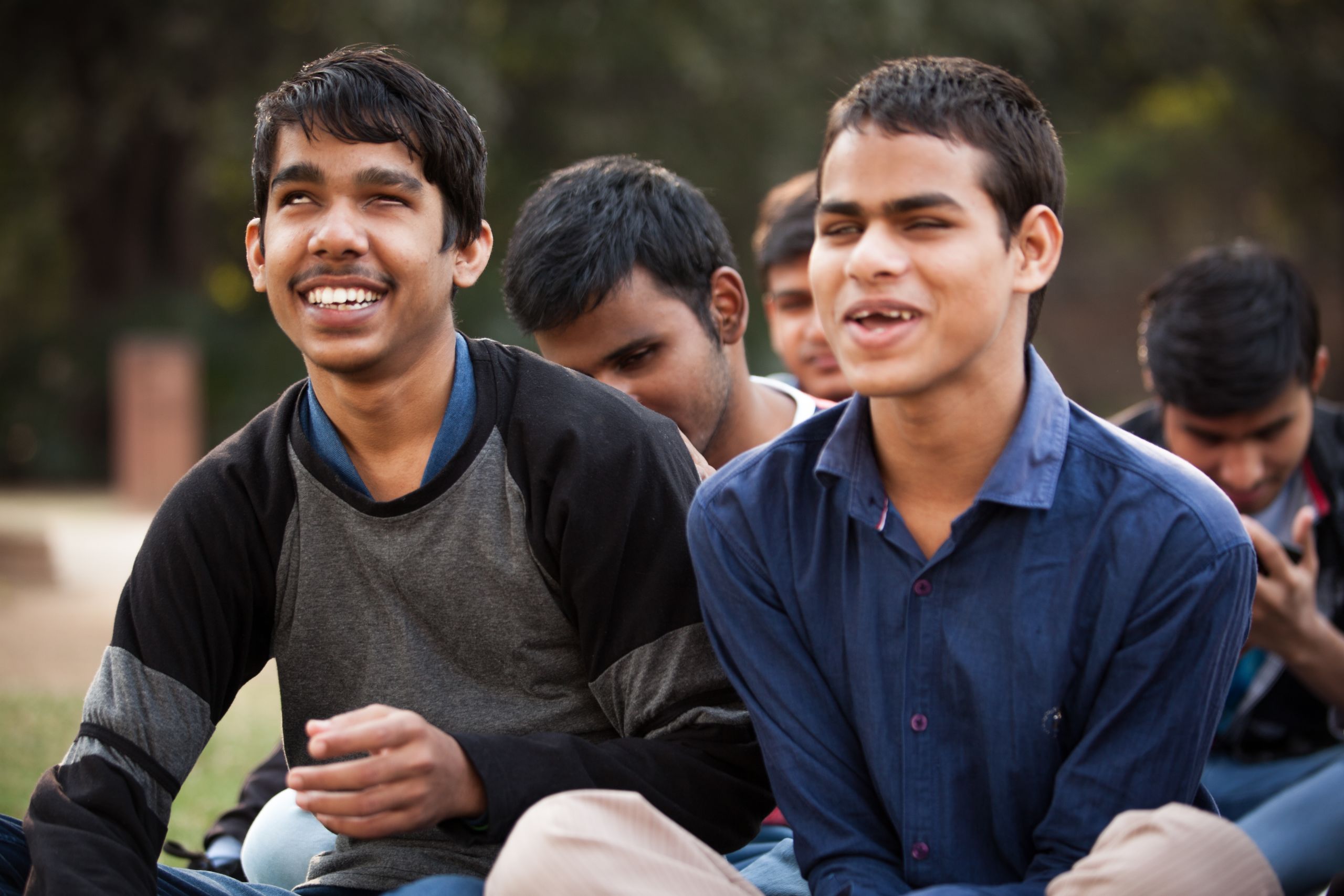
Types of Visual Impairments

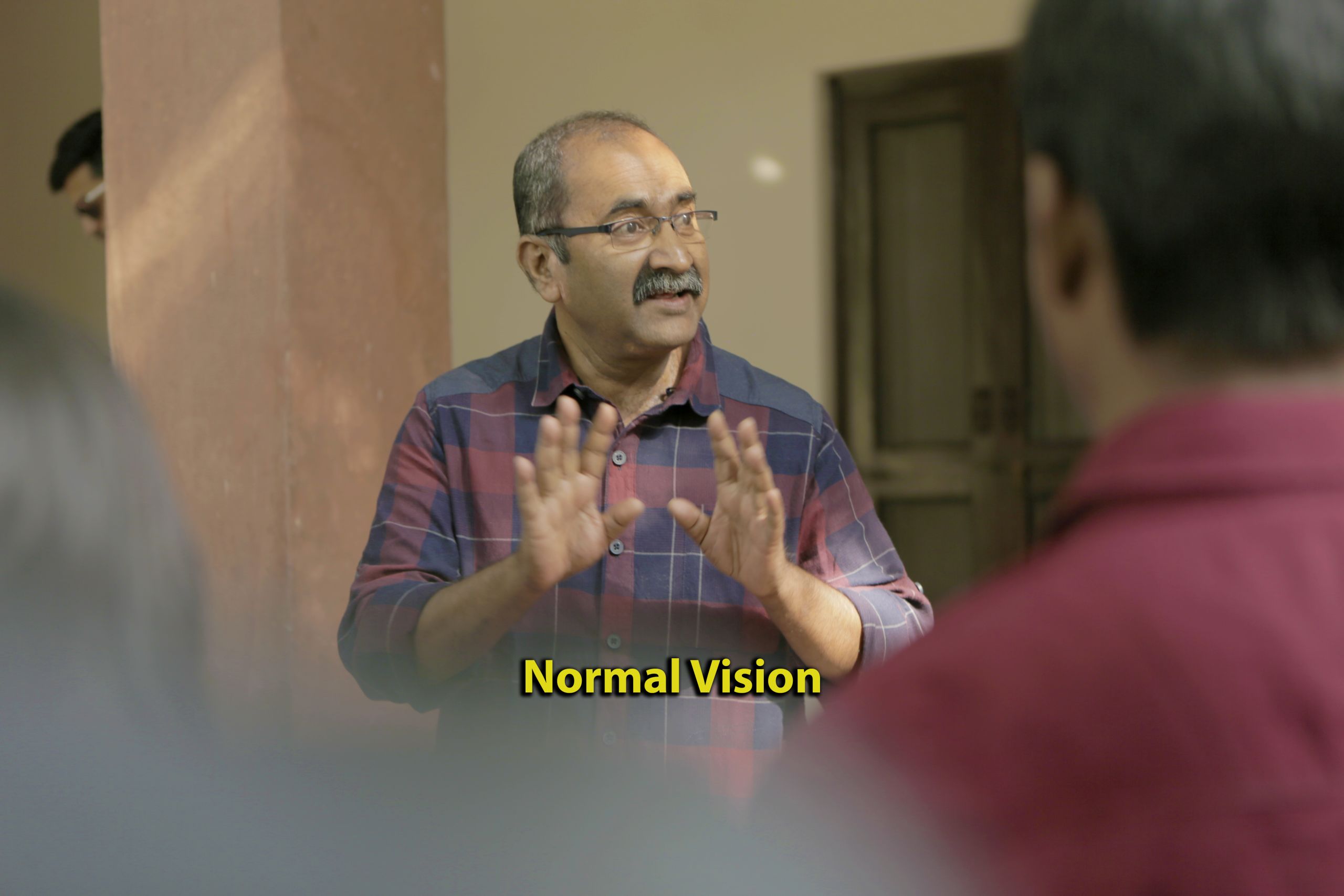
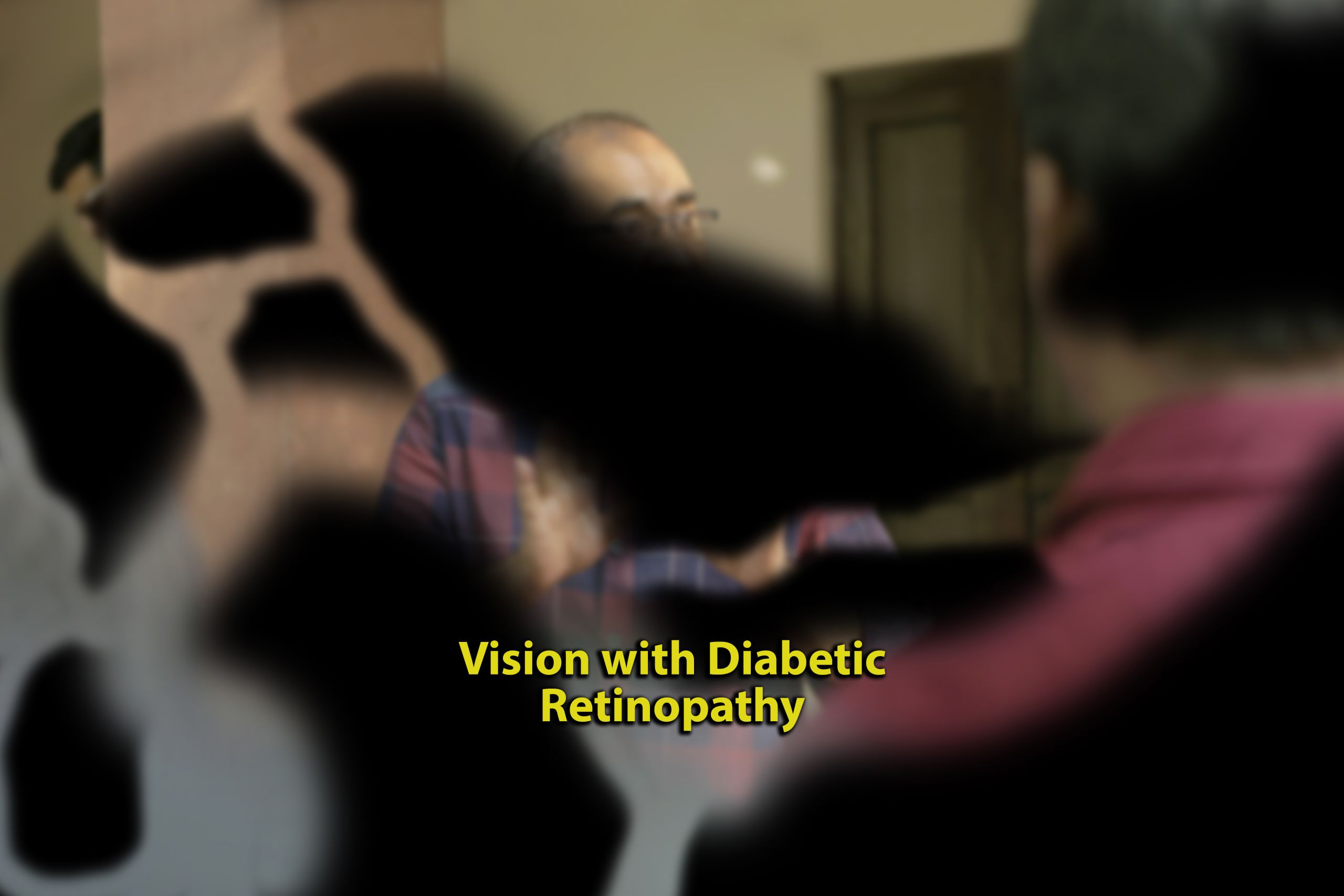
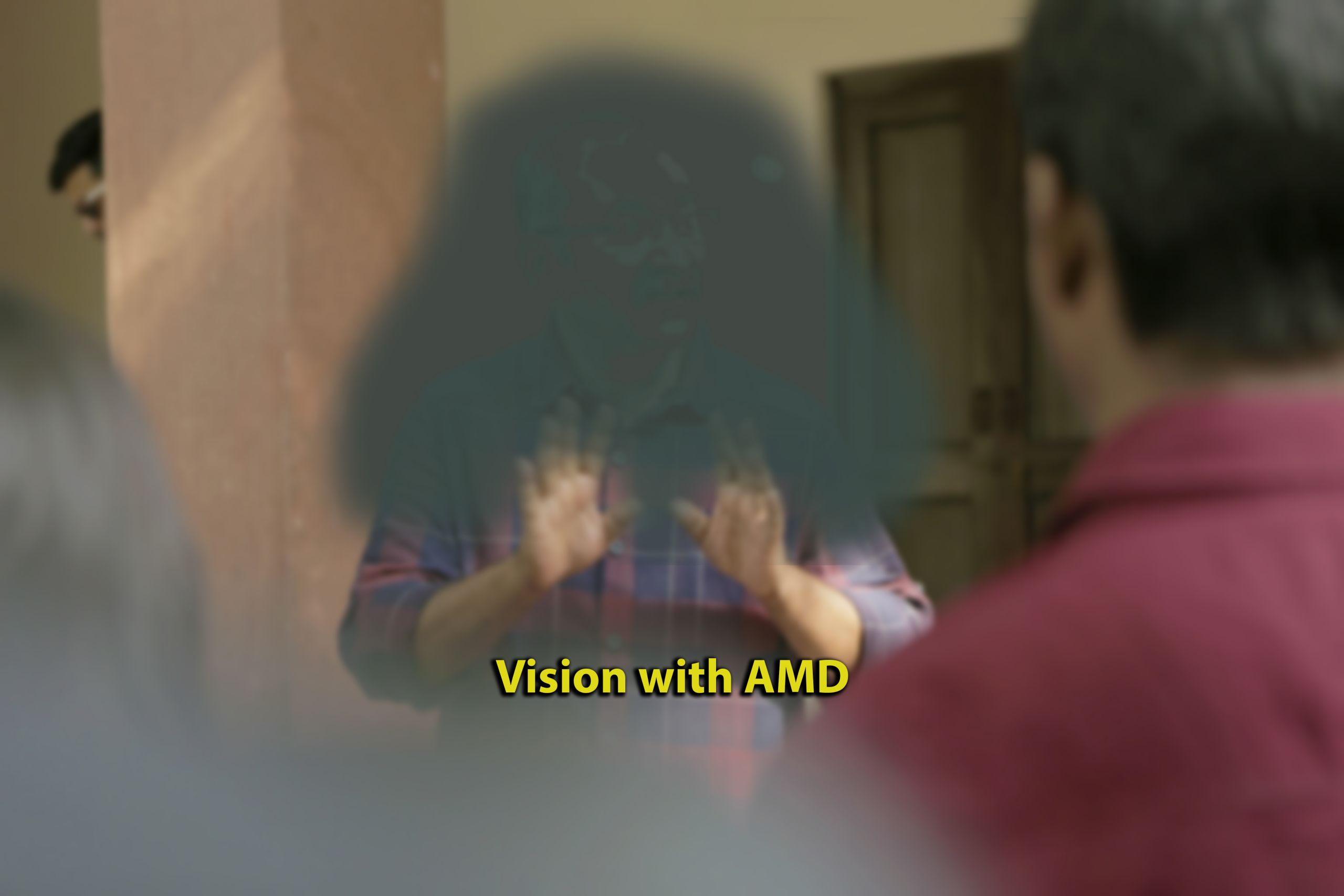
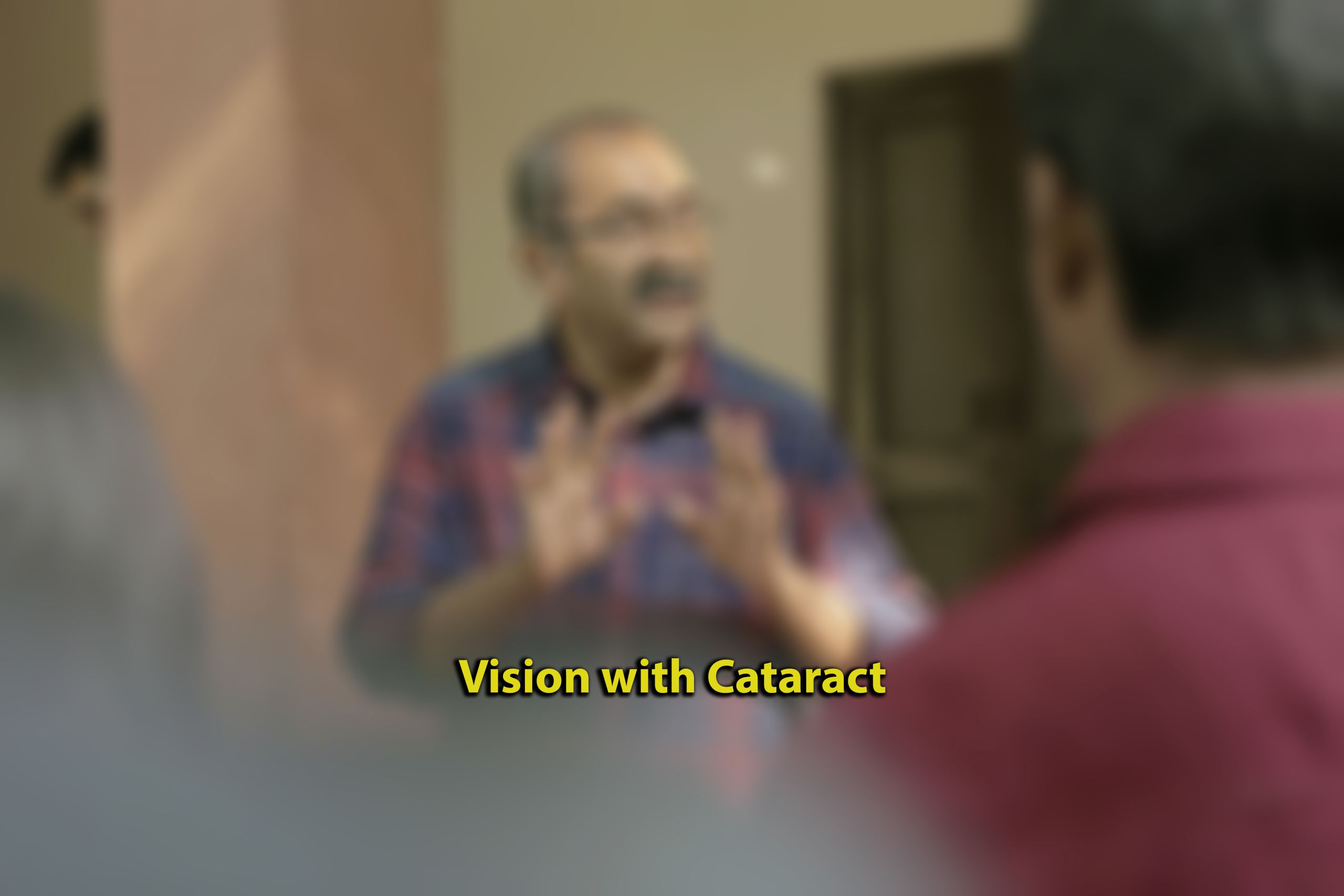
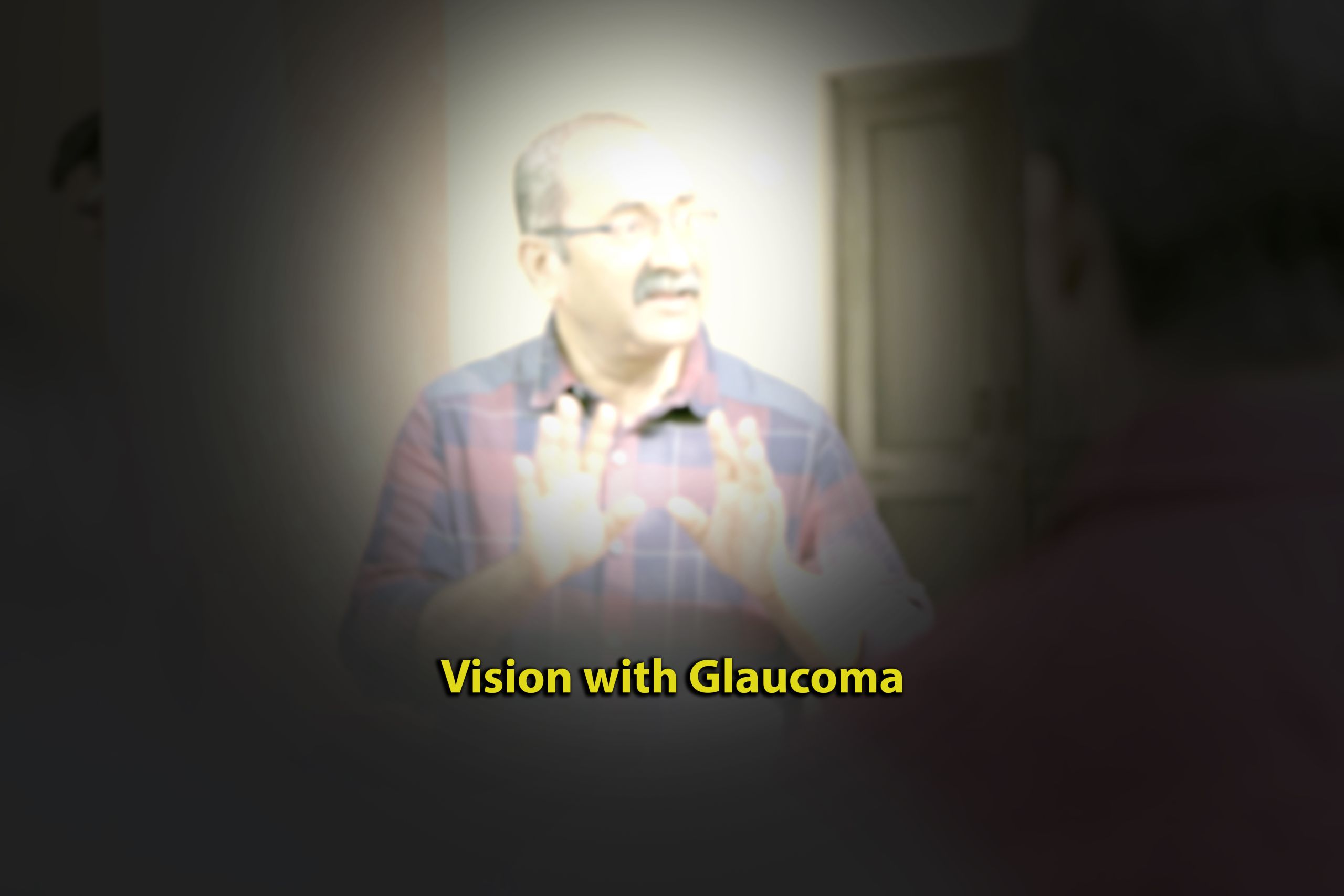
There are close to 40 million blind or visually impaired people in India - a figure larger than the entire population of Canada.
The World Health Organization estimates that 45 per cent of visual impairment worldwide can be prevented or cured.

"The blind rely on building mental images before taking pictures. Seeing through the mind’s eye of the blind photographer is the purest way of looking at the visual realities around us.”
– Partho Bhowmick, See As No Other, 2015.
Partho's workshops are an exercise in multi-sensory practise, where all other senses are used to drive the creative thought process.
“When you are blind, you can understand surface only by touch. So they have to touch the surface, and understand what kind of surface it is and they have to take a photograph of the surface,” Partho explains how his students are taught to 'see'.
Tactile photos are touch and feel images with embossed outlines - a useful tool to help the blind visualise a scene.
Other techniques include using their other non-visual senses – touch (feeling differences in temperature), smell and sound.
Emotions and memory (for those who were not born blind) also help them to form a mental image. Using these layers of information, participants capture the photograph.
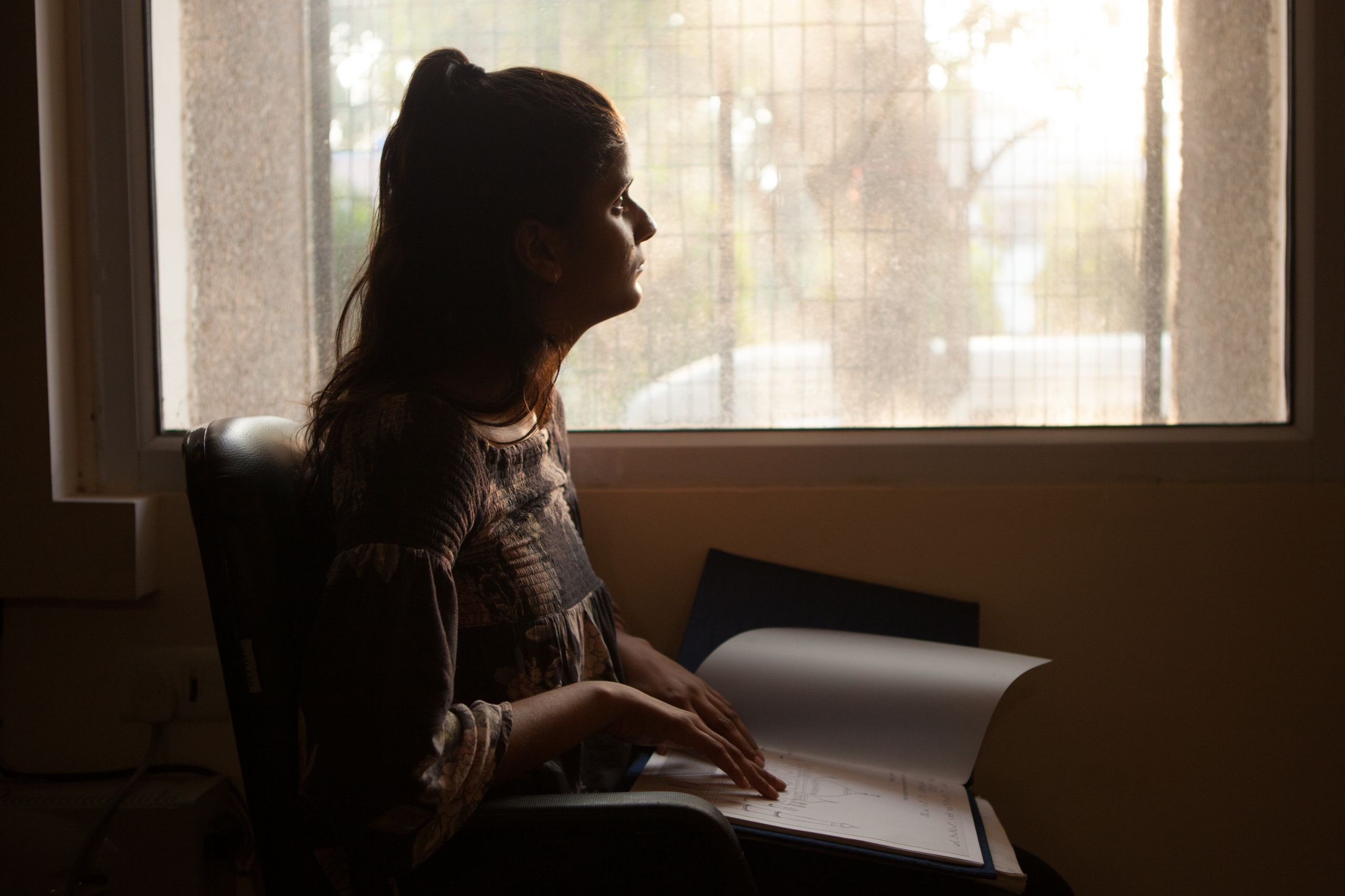
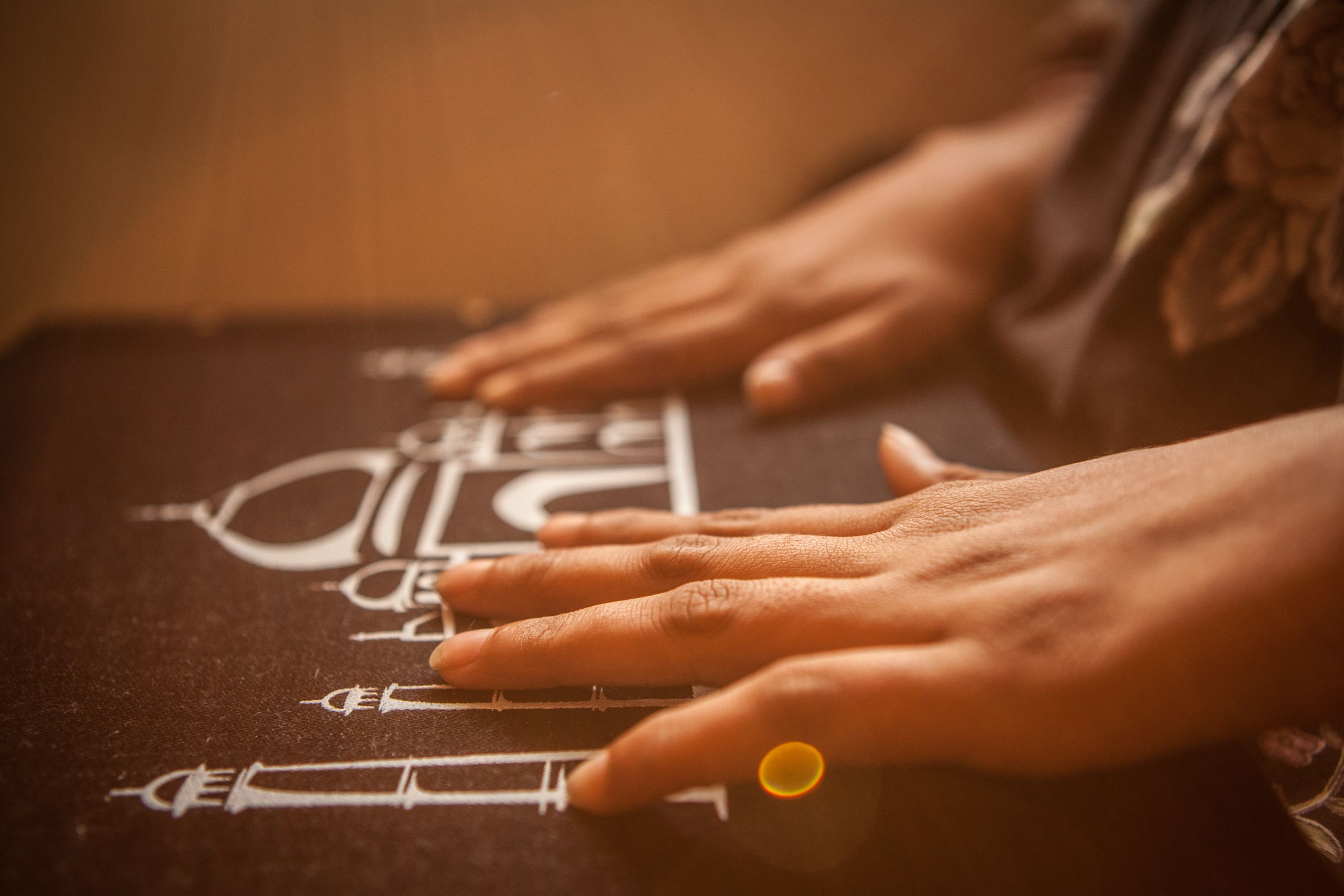
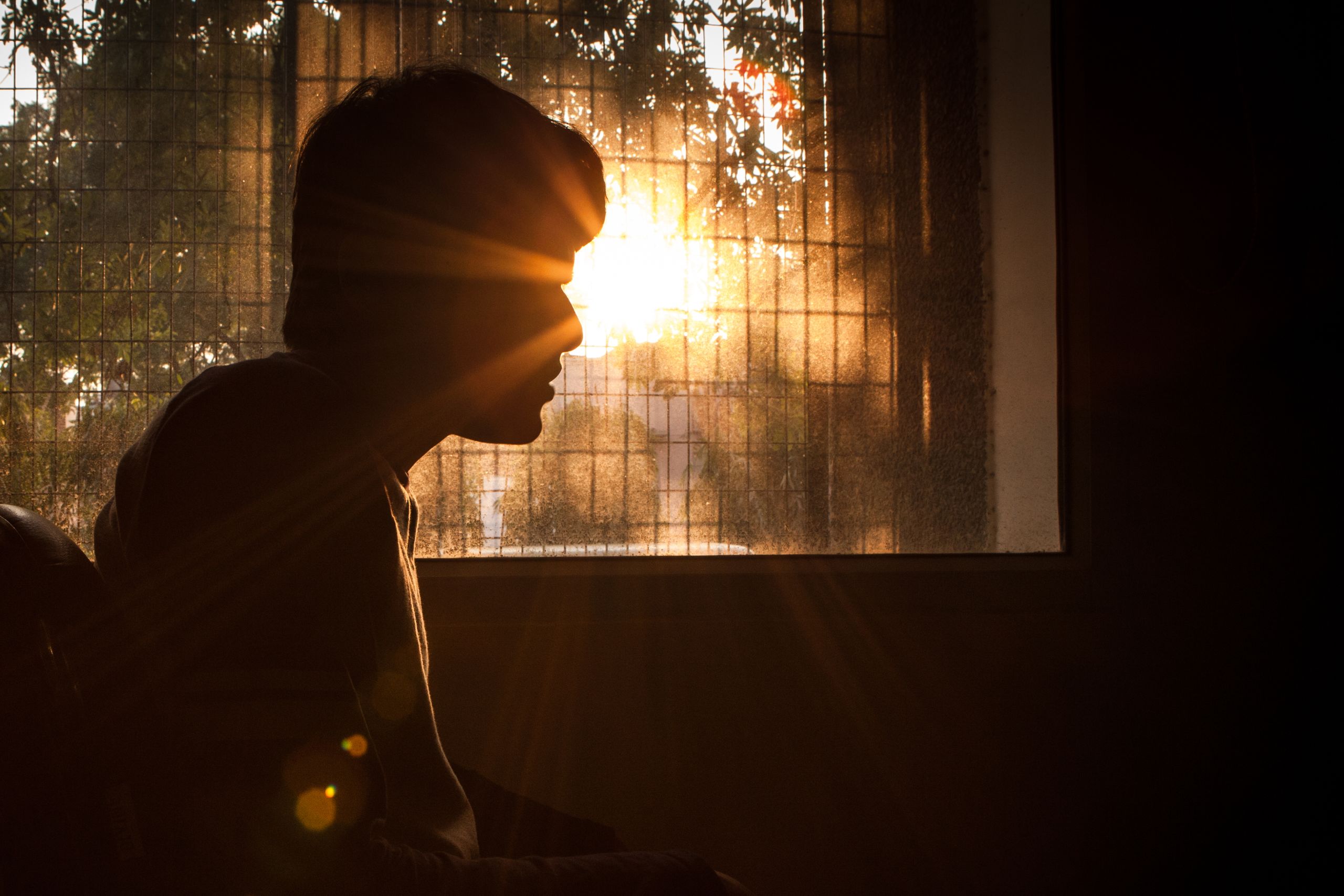
During a three-day workshop, Partho and his team of volunteers bring the participants out into the field.
Ancient monuments like Qutub Minar and Humayan's Tomb in New Dehli, allow participants to put their theory to practise.
The photographers rely on each other to navigate the vast garden-tomb complex of Humayun's Tomb.
The lessons they have learned guide the photographers as they visualise the world around them.
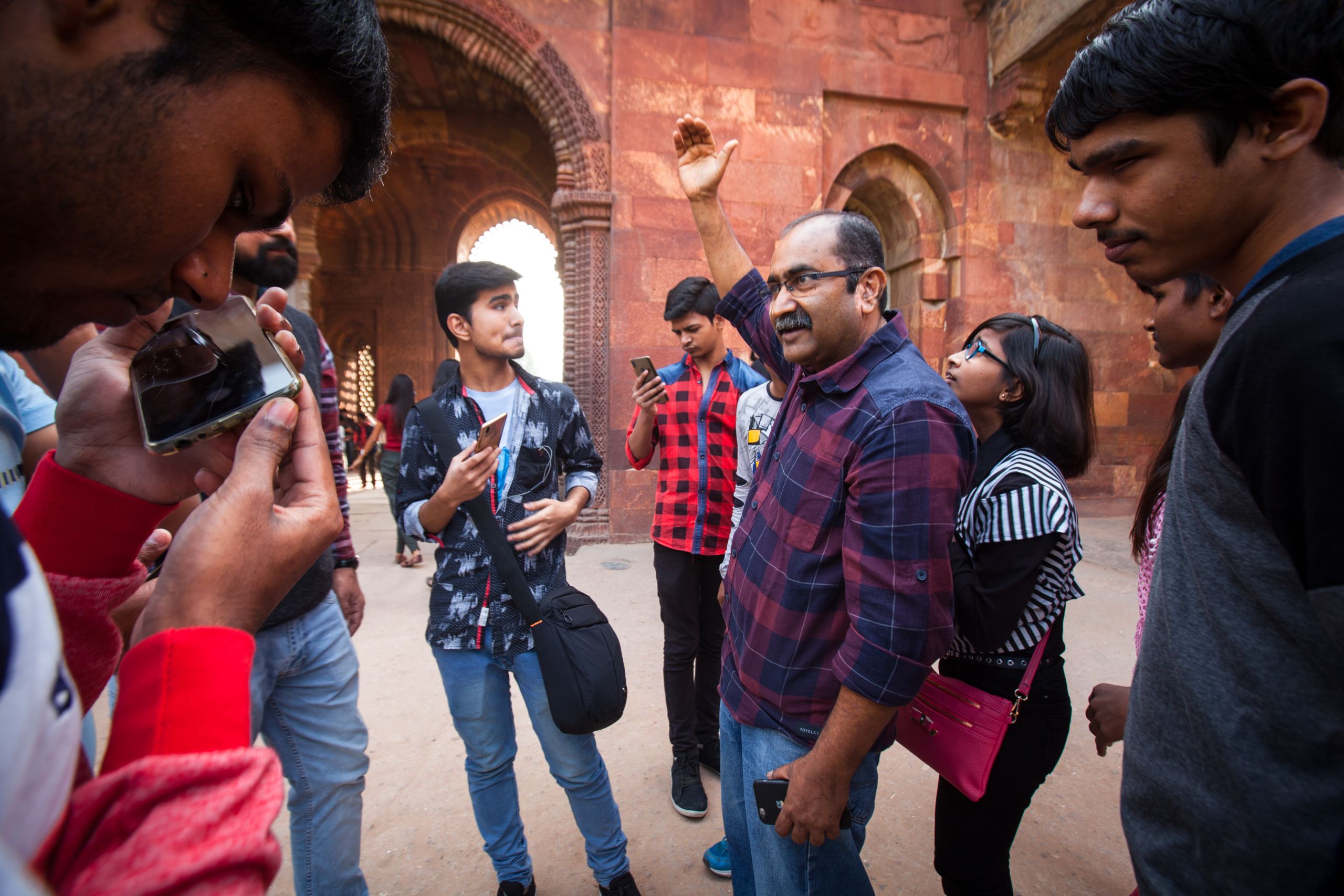
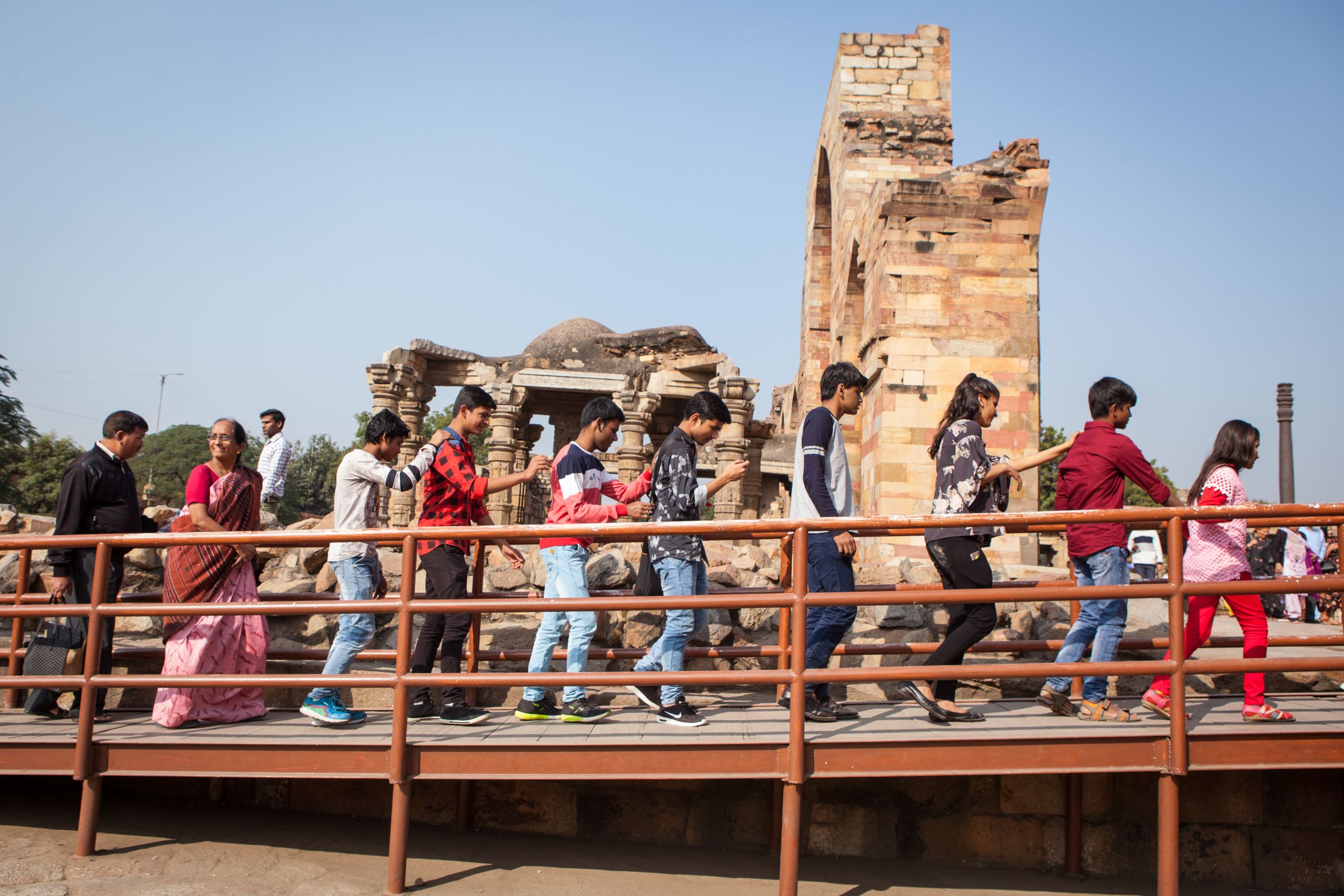
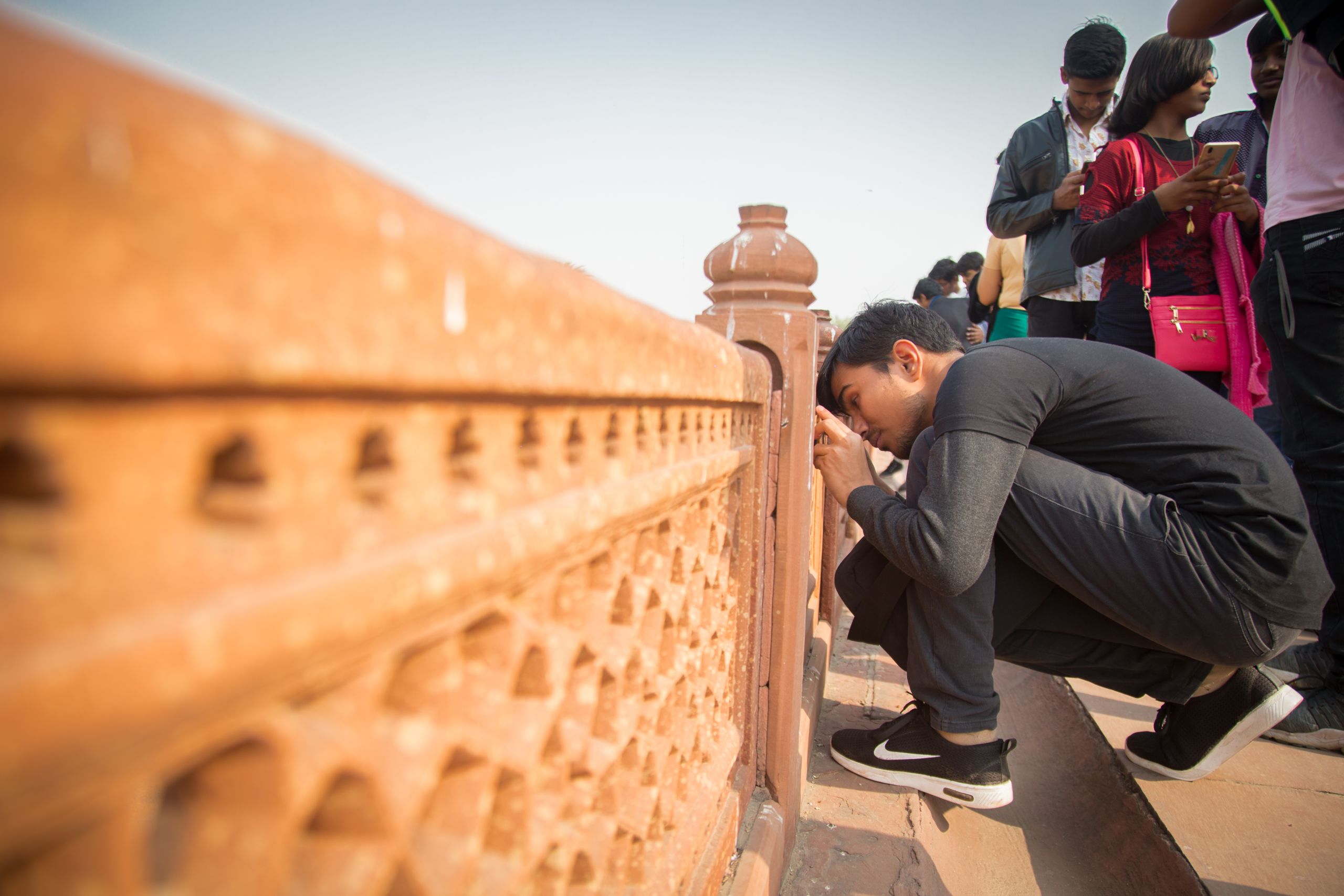
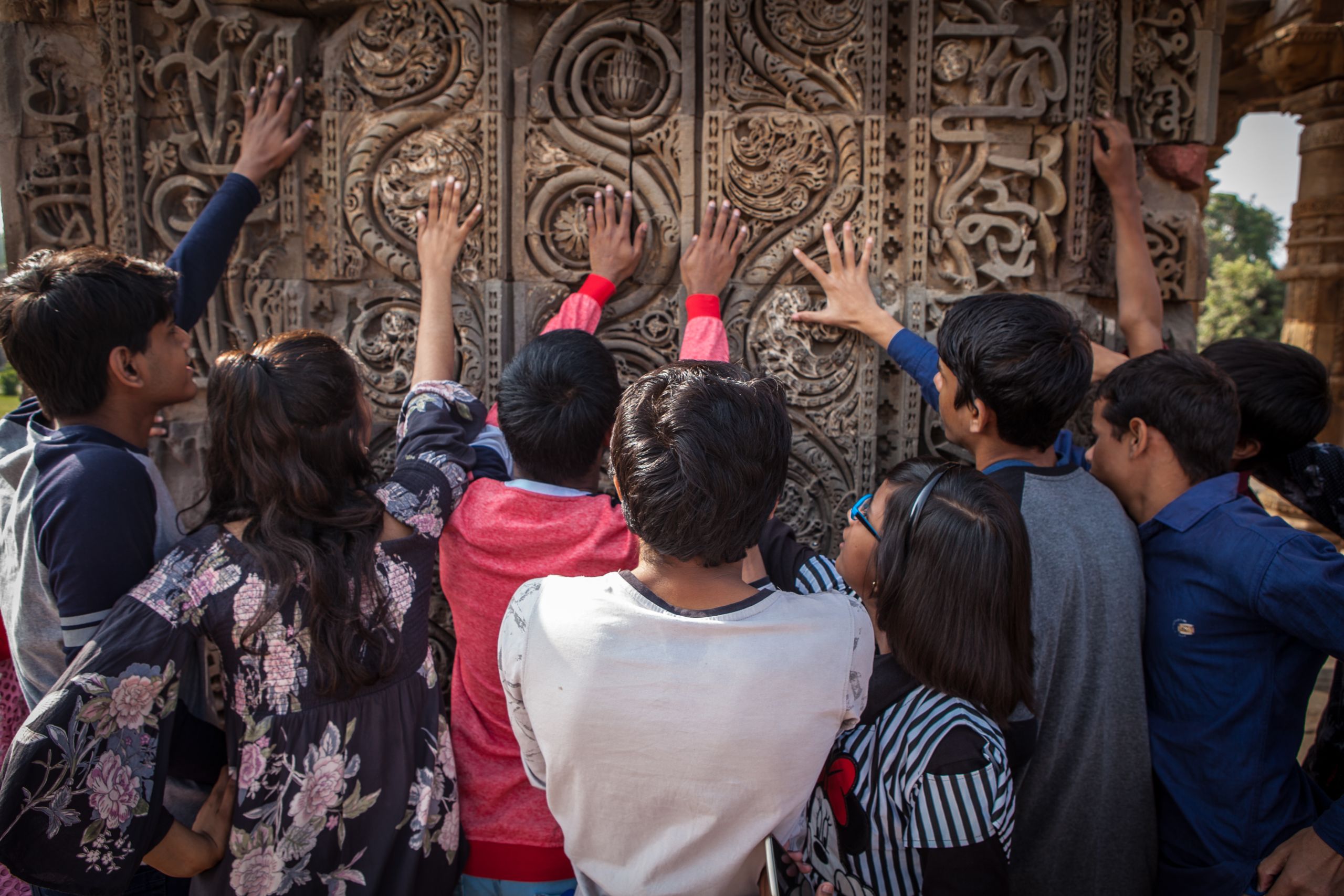
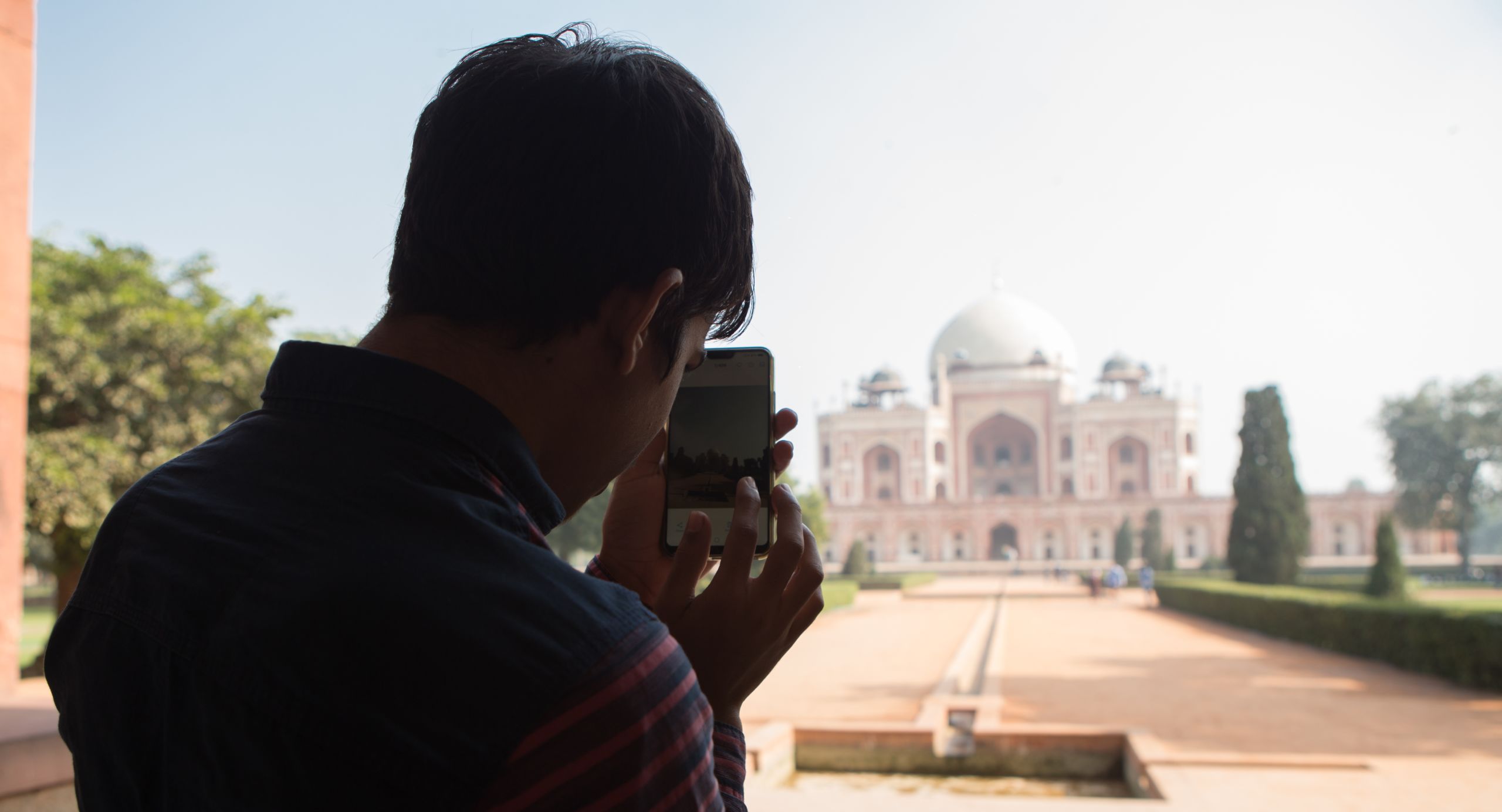
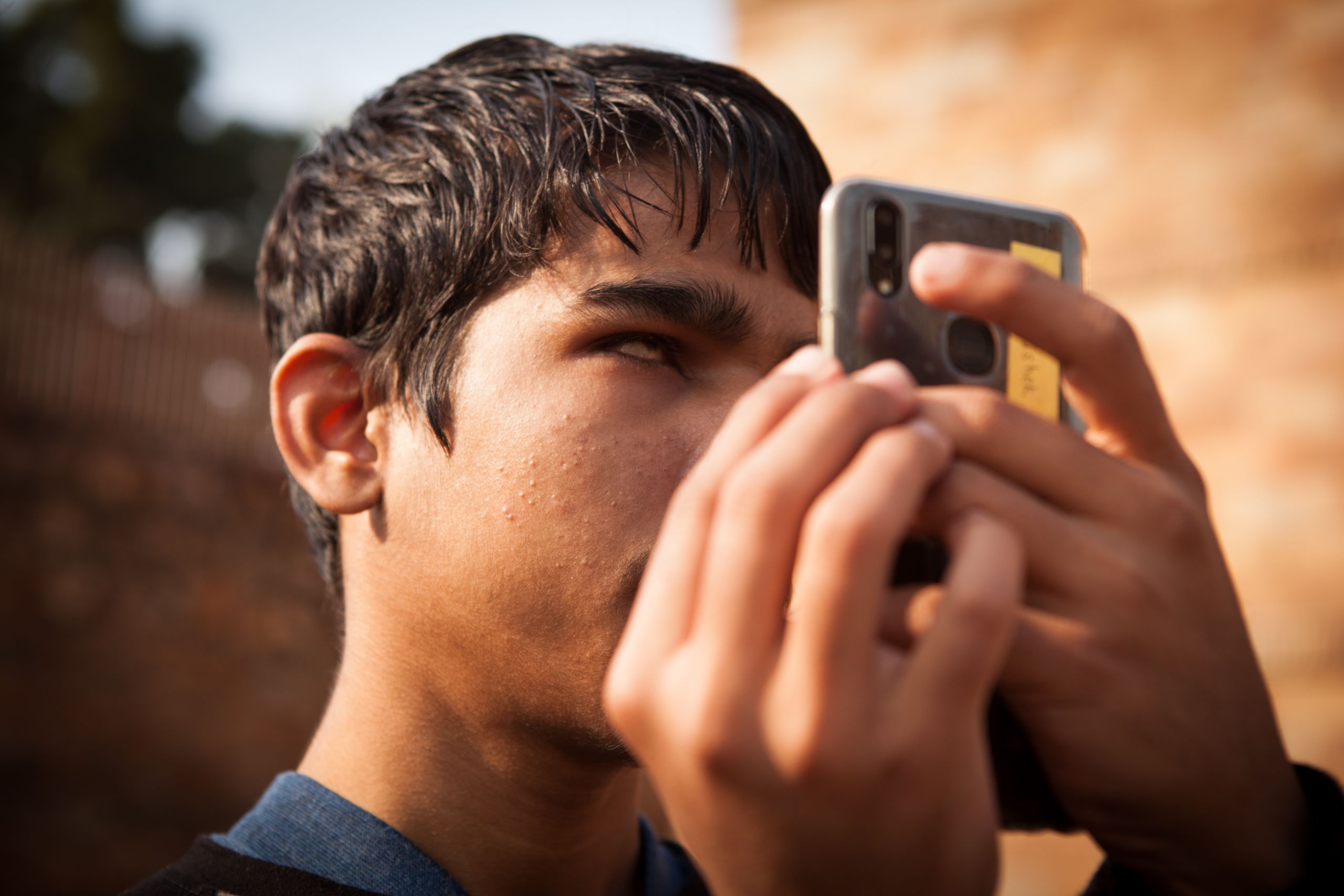
An understanding of spatial awareness is especially important when taking tall objects, like Qutub Minar.
“First concept was measuring the distance, footsteps of the particular object or particular picture that we want to click, and then going to the centre of it and clicking three or four photographs and one-one or two-two steps behind and of them will be a perfect photo.”
- Ayush
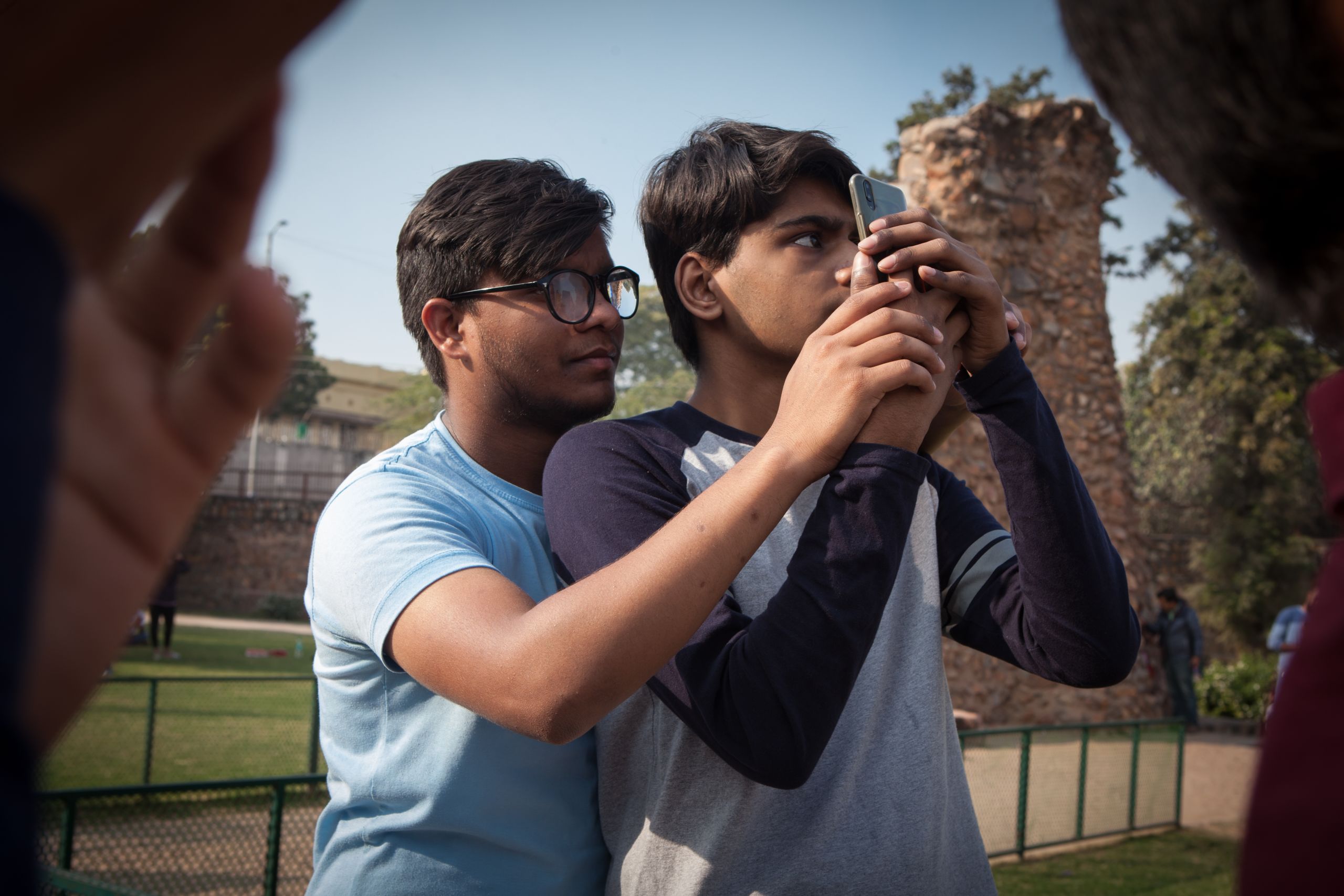
Partho believes that through photography and outdoor excursions, the blind can find their artistic voice and interact with the sighted. Photography also heightens their senses so that they can better communicate their thoughts and perceptions. It's an experience that impacts Partho too.
“While working on Blind with Camera, I have realised blindness by seeing too much. Like me, most sighted people are blinded by the image-centric emphasis on a visual interpretation of knowledge, truth and reality. We fail to value other senses, so our sensibility is narrowed, and our experience, flattened.”
– Partho Bhowmick, See As No Other, 2015.
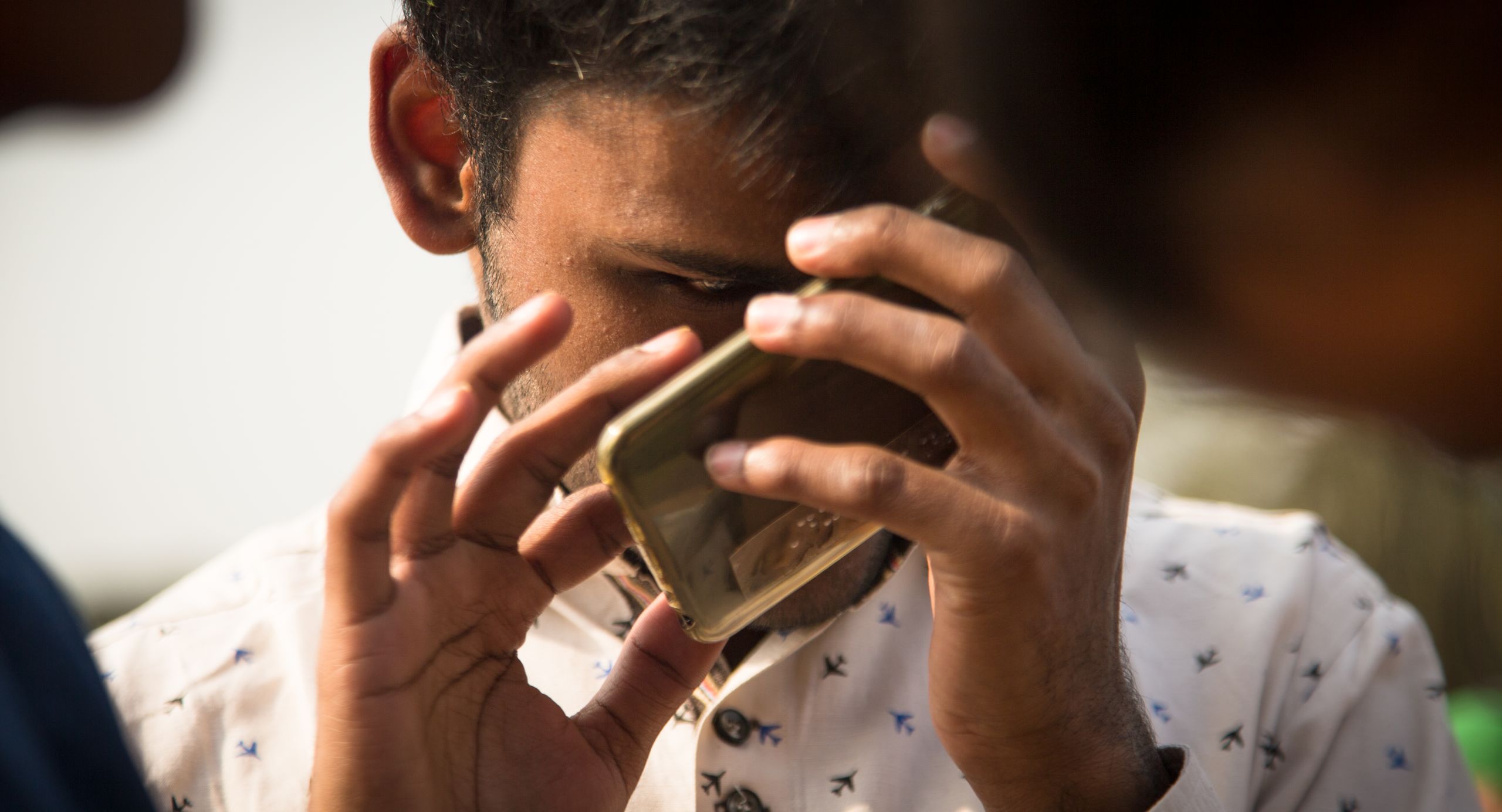
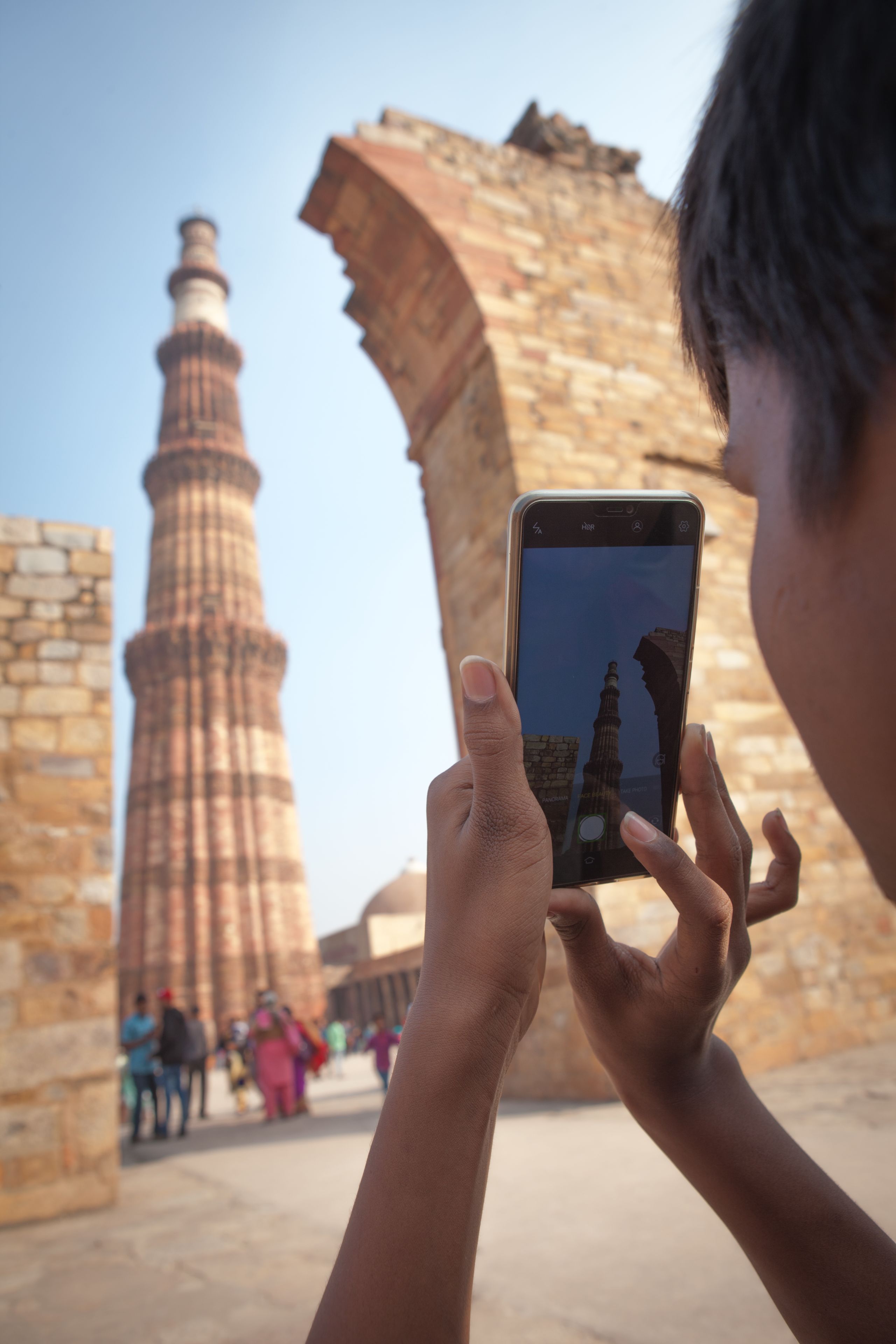
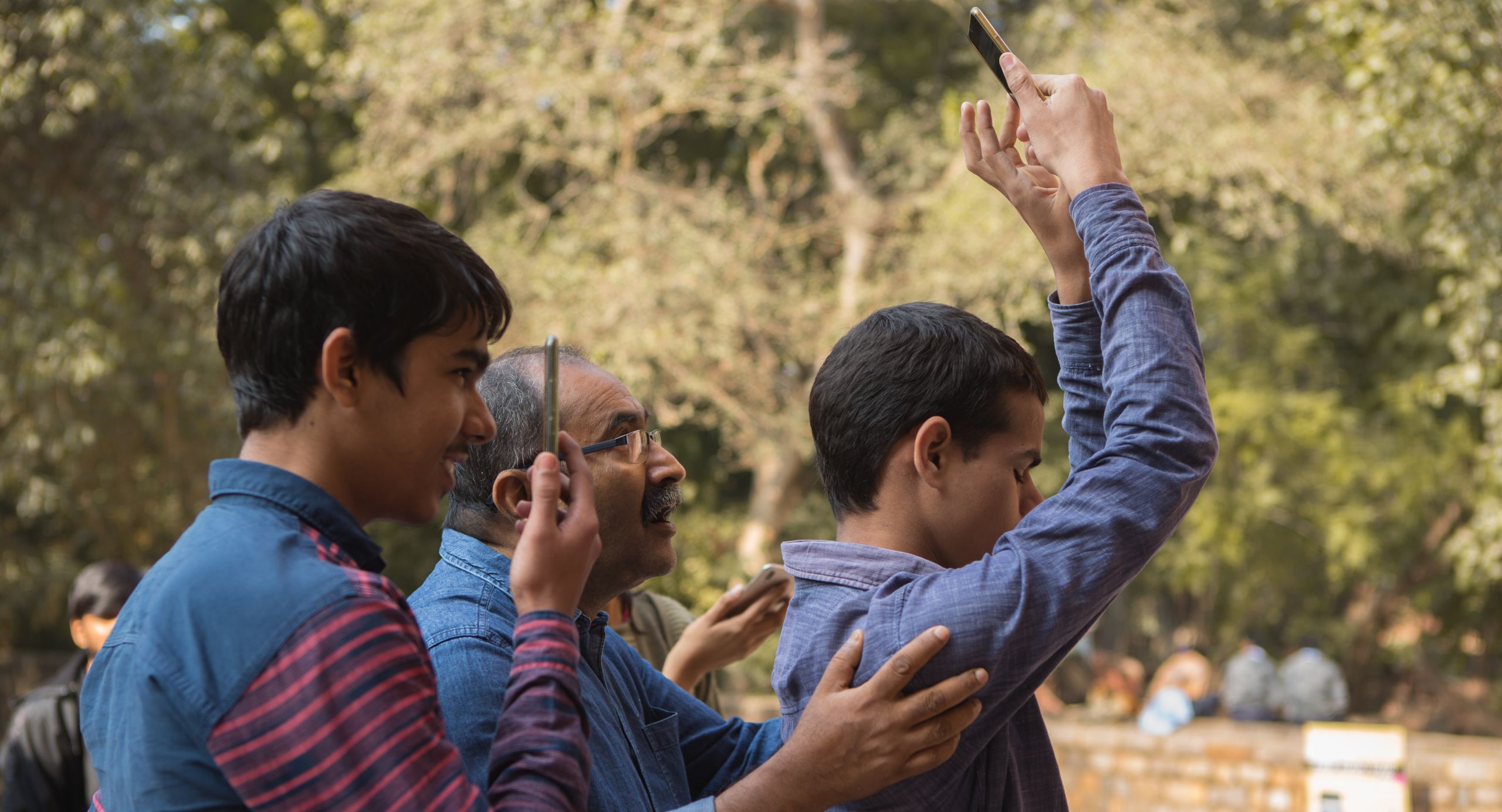
Volunteers, like Shanta Rangarajan, who teaches at the National Association for the Blind in New Delhi, are essential to the success of Blind with Camera, as sighted and non-sighted volunteers pair with the blind on photo-taking excursions.
To make his initiative self-sustainable, Partho runs a program called Train the Trainer, where he teaches volunteers techniques on how to help the visually impaired.
Partho also began the Blindfold Photo Workshop, where a blind person shows a sighted person, who is blindfolded, how to take a photo. This gives the visually challenged more employment opportunities, while further bridging the gap between the blind and the sighted.
“A relationship starts happening. The sighted person comes to know a lot of things about the blind person – how they go about using a mobile phone, how they move around on the streets, how they move in the train… It goes beyond the workshop – it goes to understanding and building empathy.”
- Partho
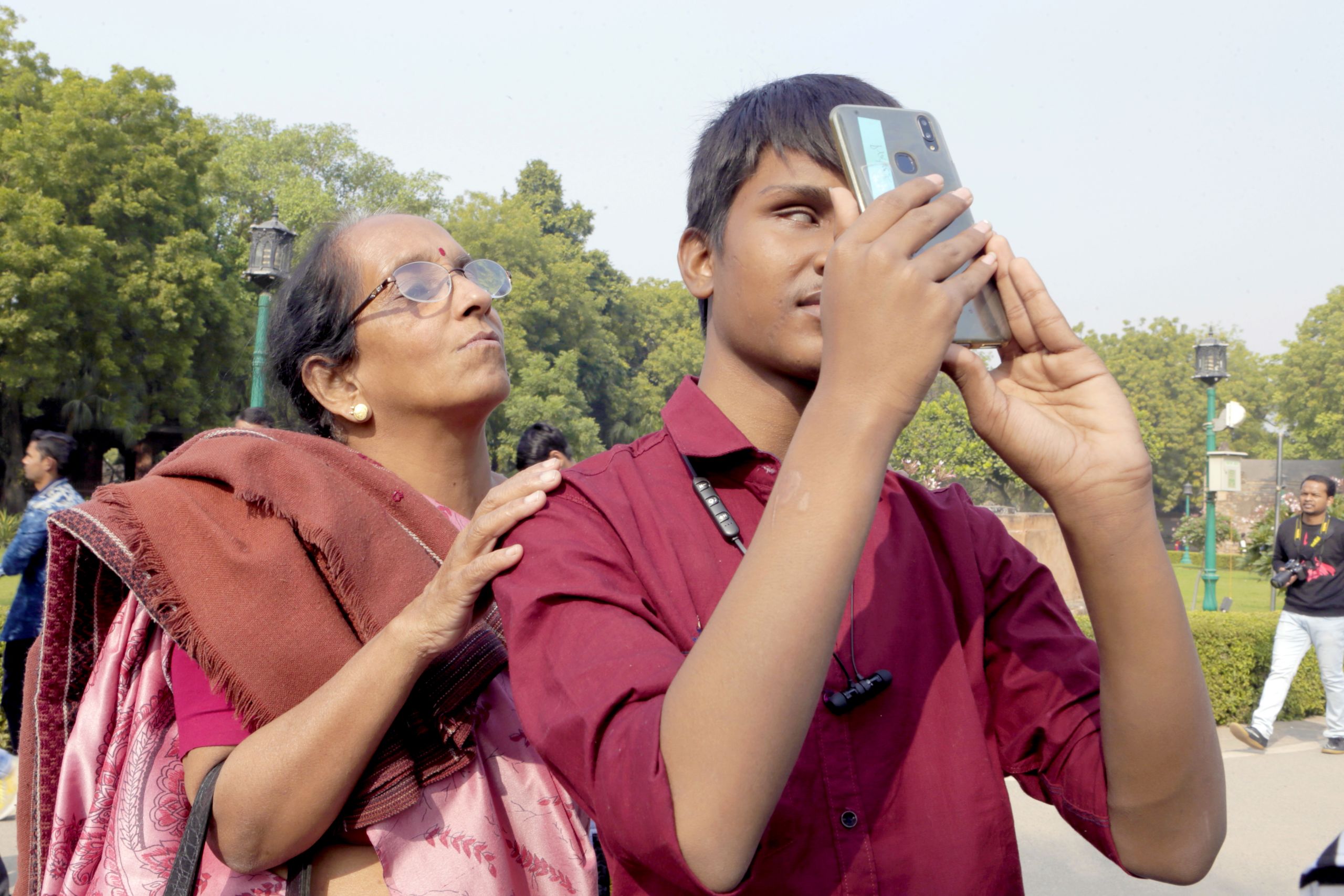
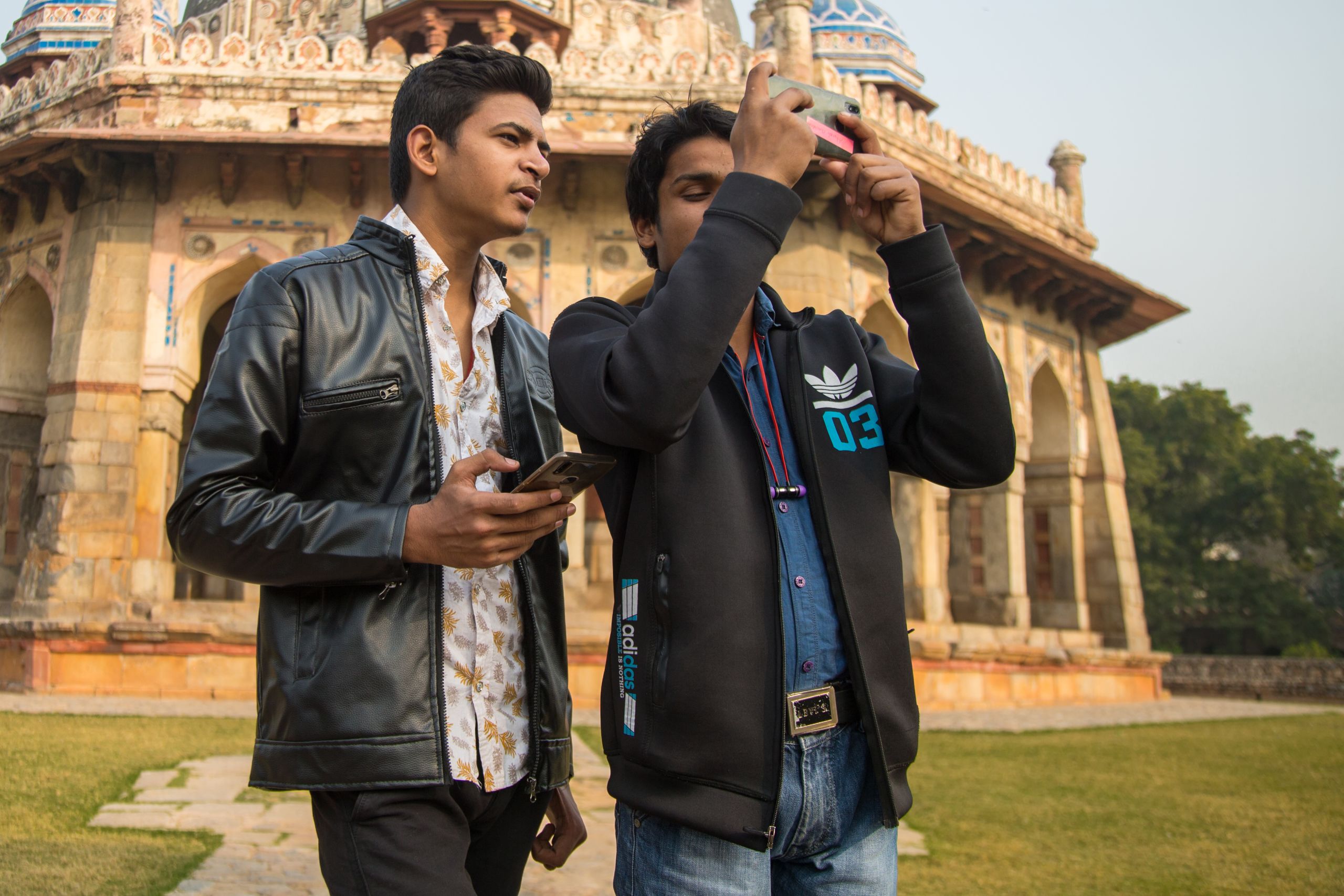
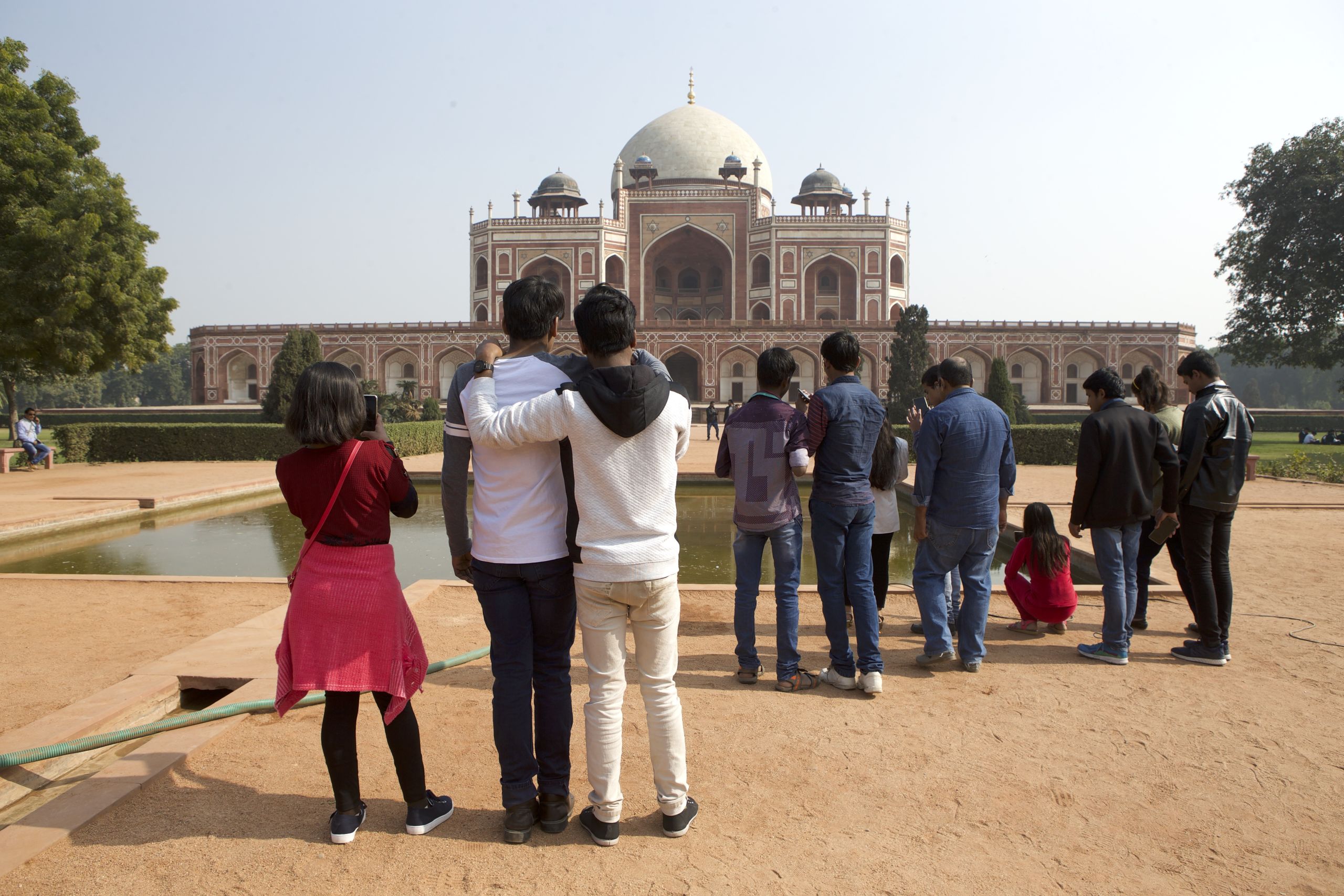
As these workshops evolved over the years, Partho used photographs taken by blind participants to create inclusively designed exhibitions. They contain a print of the selected photograph, its audio description, a tactile version, with footnotes in normal print and in Braille. These exhibitions have travelled across India and abroad, reaching over 40,000 sighted people and thousands of visually impaired.
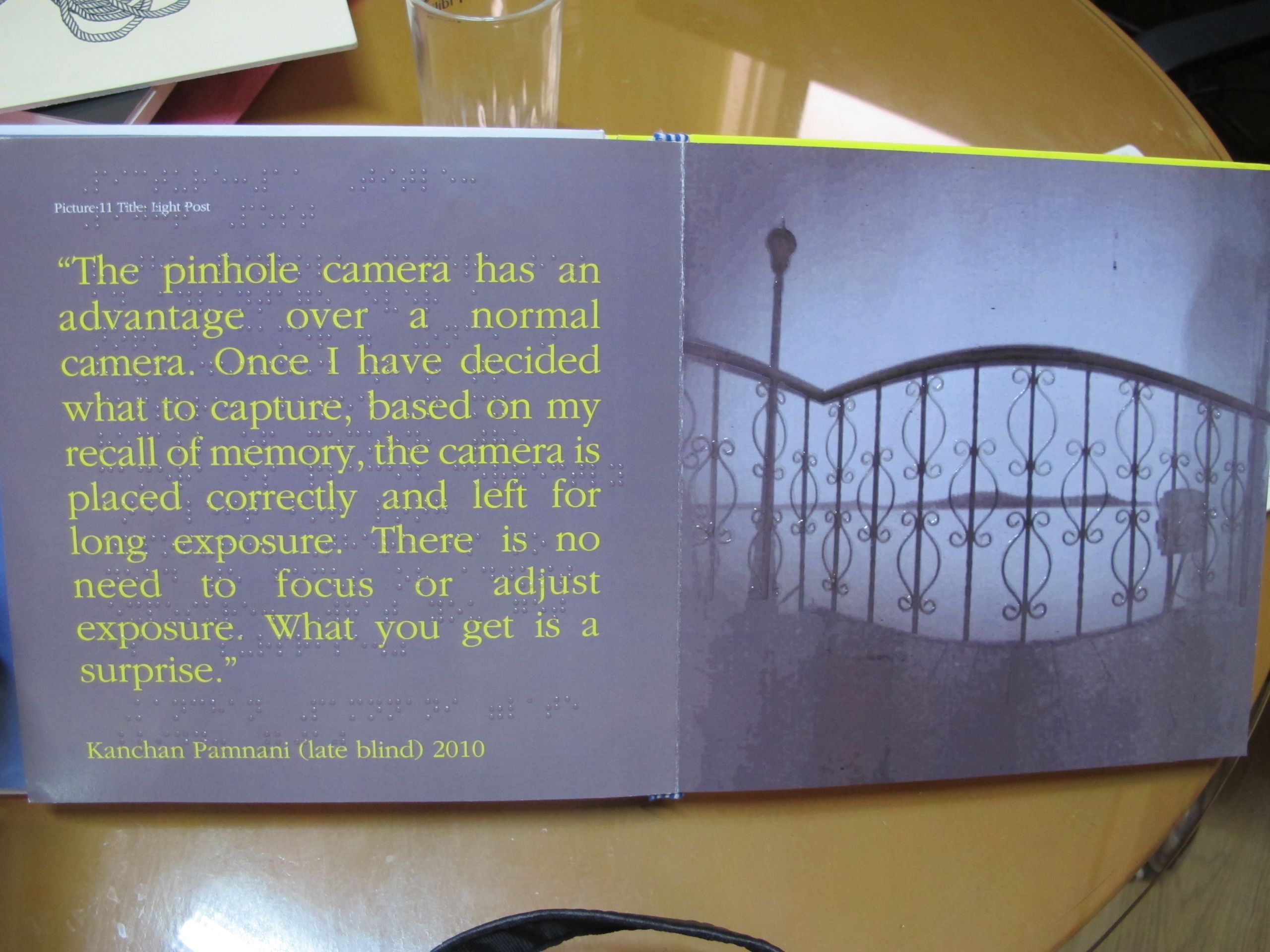
Blind with Camera Photo book
Blind with Camera Photo book
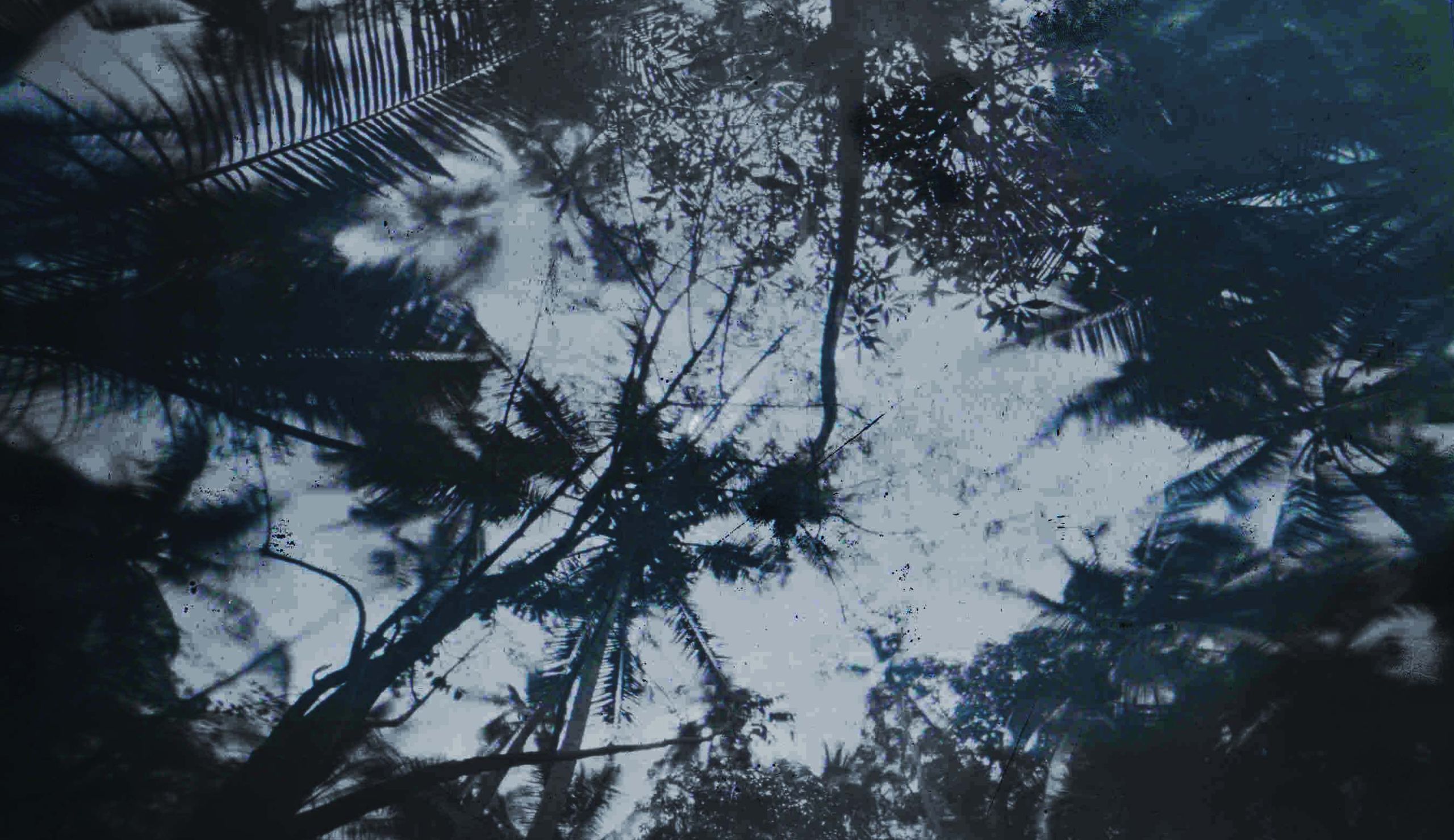
Photo by Pranav Lal, born blind
Photo by Pranav Lal, born blind
This picture by Pranav Lal, born blind, was taken with a pinhole camera made from a PVC pipe. The image was created directly on photo paper.
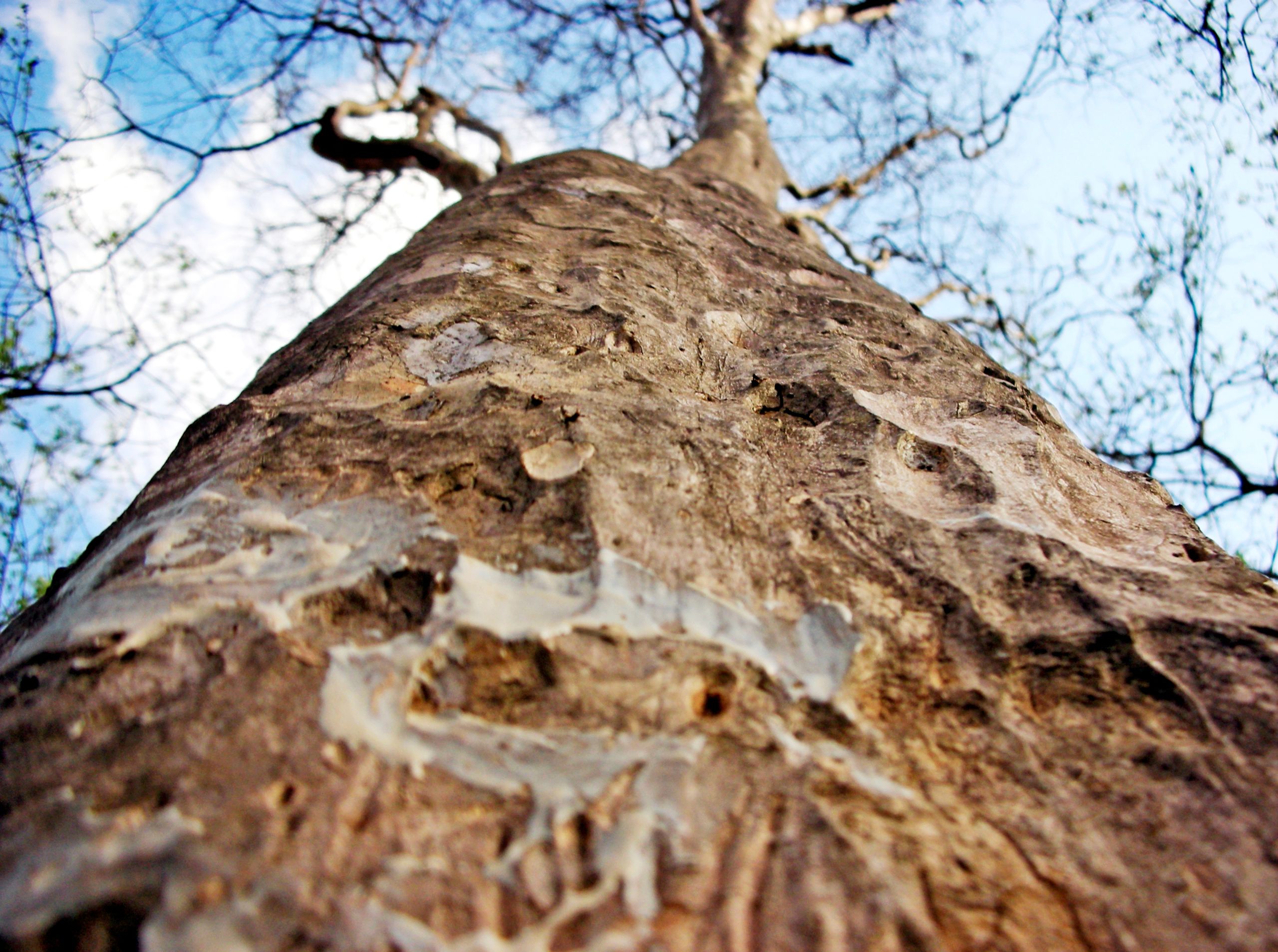
Photo by Satvir Jogi
Photo by Satvir Jogi
“I came very close to the tree trunk to feel the texture. On looking up, I saw the tree like blurry pyramid with branch on top.”
- Satvir Jogi, partially sighted
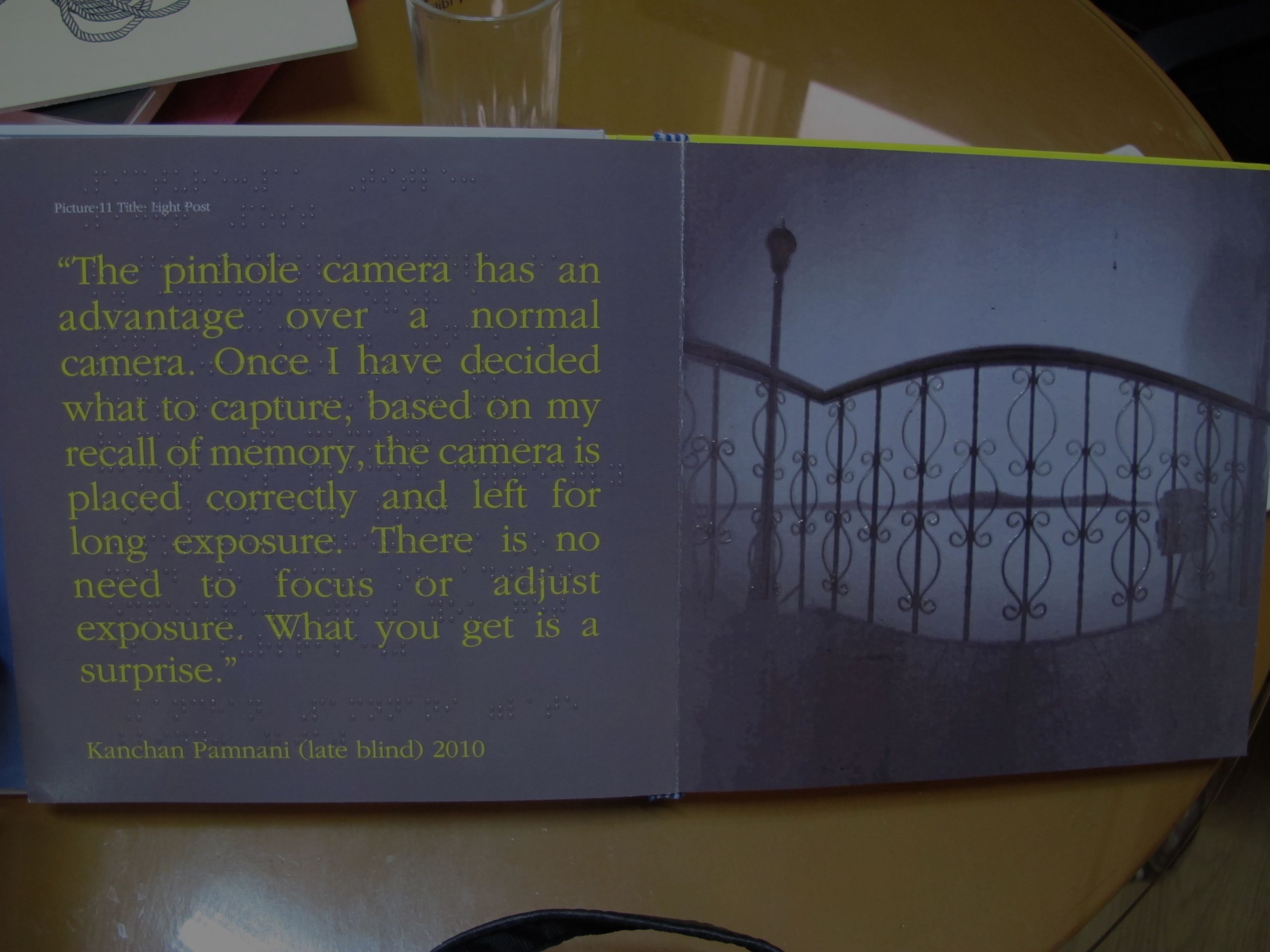
Some students have since gained financial independence through photography, acheiving success within the photographic community. One such student, Bhavesh Patel was commissioned to photograph one of India’s most popular female superstars, Katrina Kaif, and paid industry standard rates for the assignment.
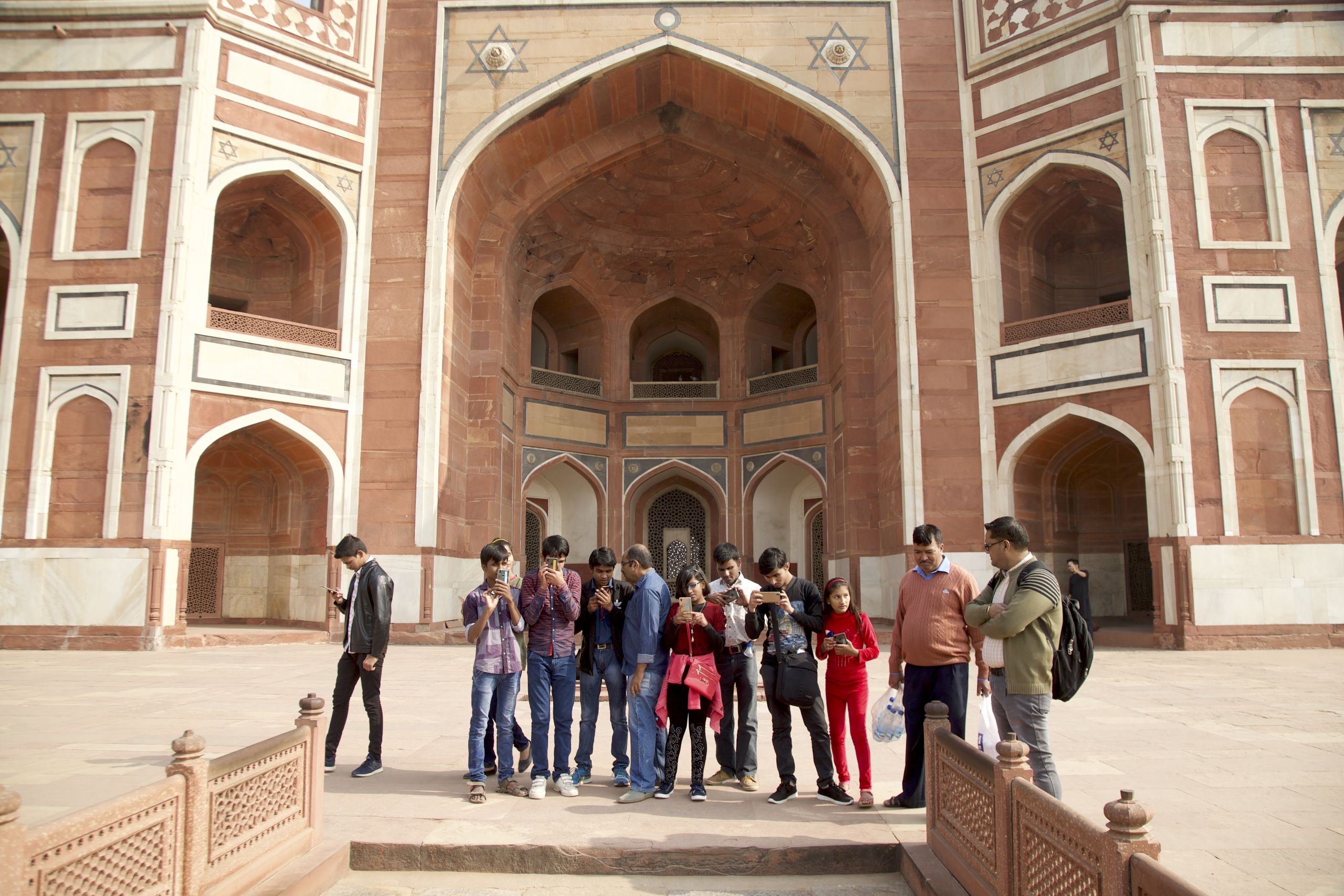
“I am very passionate about photography and capturing things around me. Partho taught me a lot… I love taking photos of monuments and love taking selfies. I have another aim – to be able to take photos of wild animals.”
- Aditi Sharma, partially sighted
Loves sharing her photos on social media
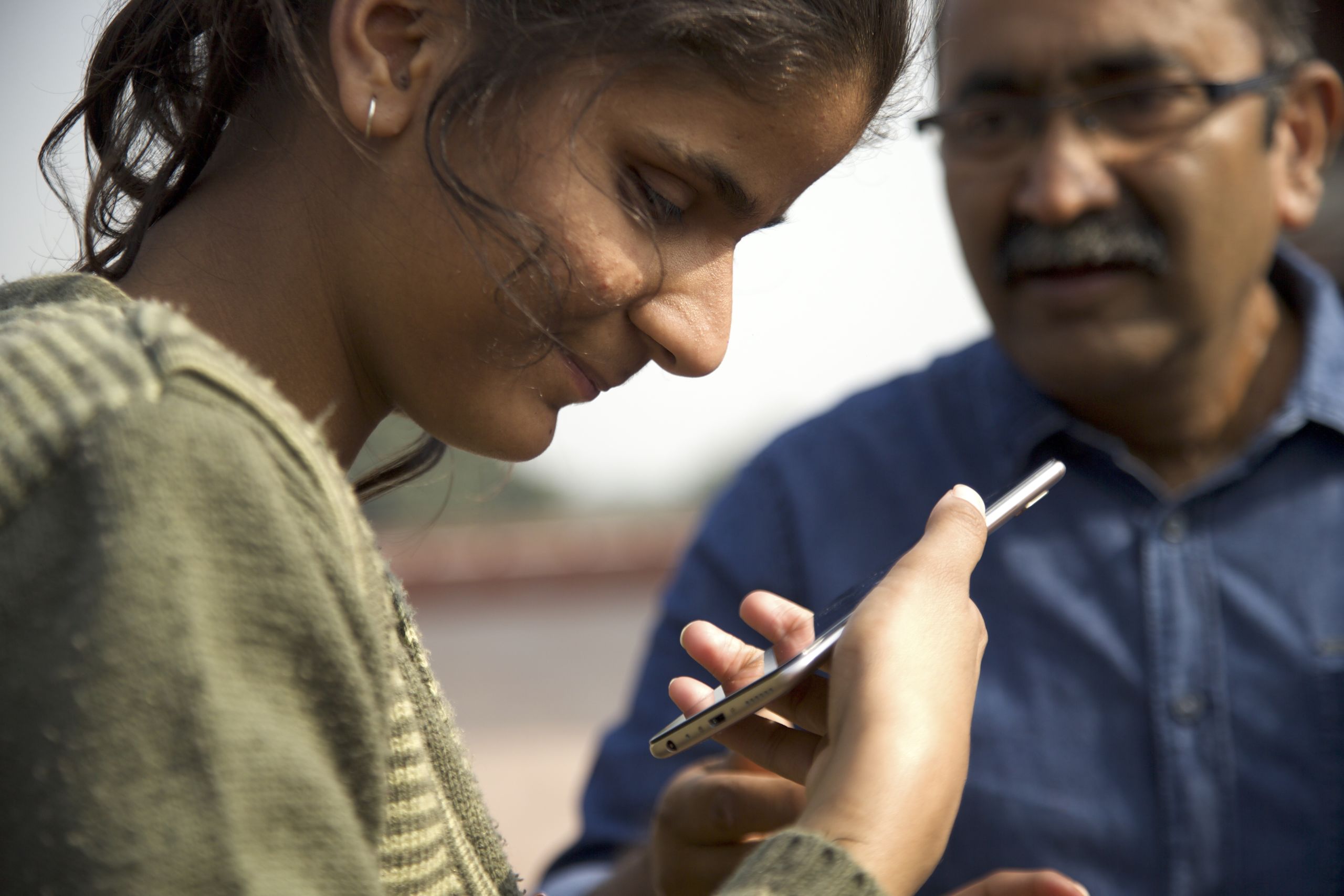
As the photographers and volunteers wrap up their shoot, Partho shares his vision, "What I look forward to is ... more and more volunteers, whether they are photographers or otherwise, who love to become trainers for the continuity of the Blind with Camera in their localities."
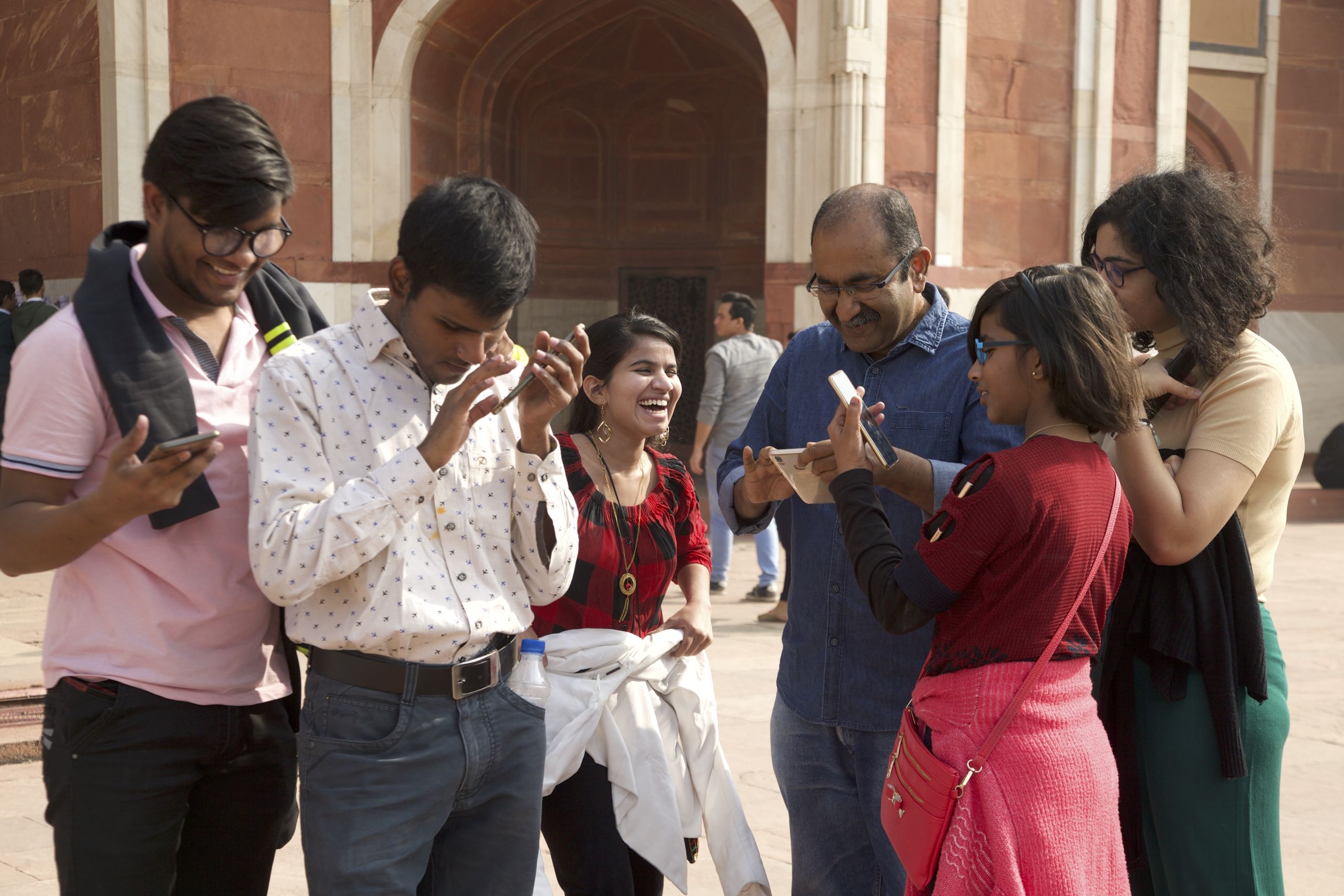
For these intrepid photographers, the end of the day trip, is the start of a new adventure - one of inclusivity, hope and possibilities.
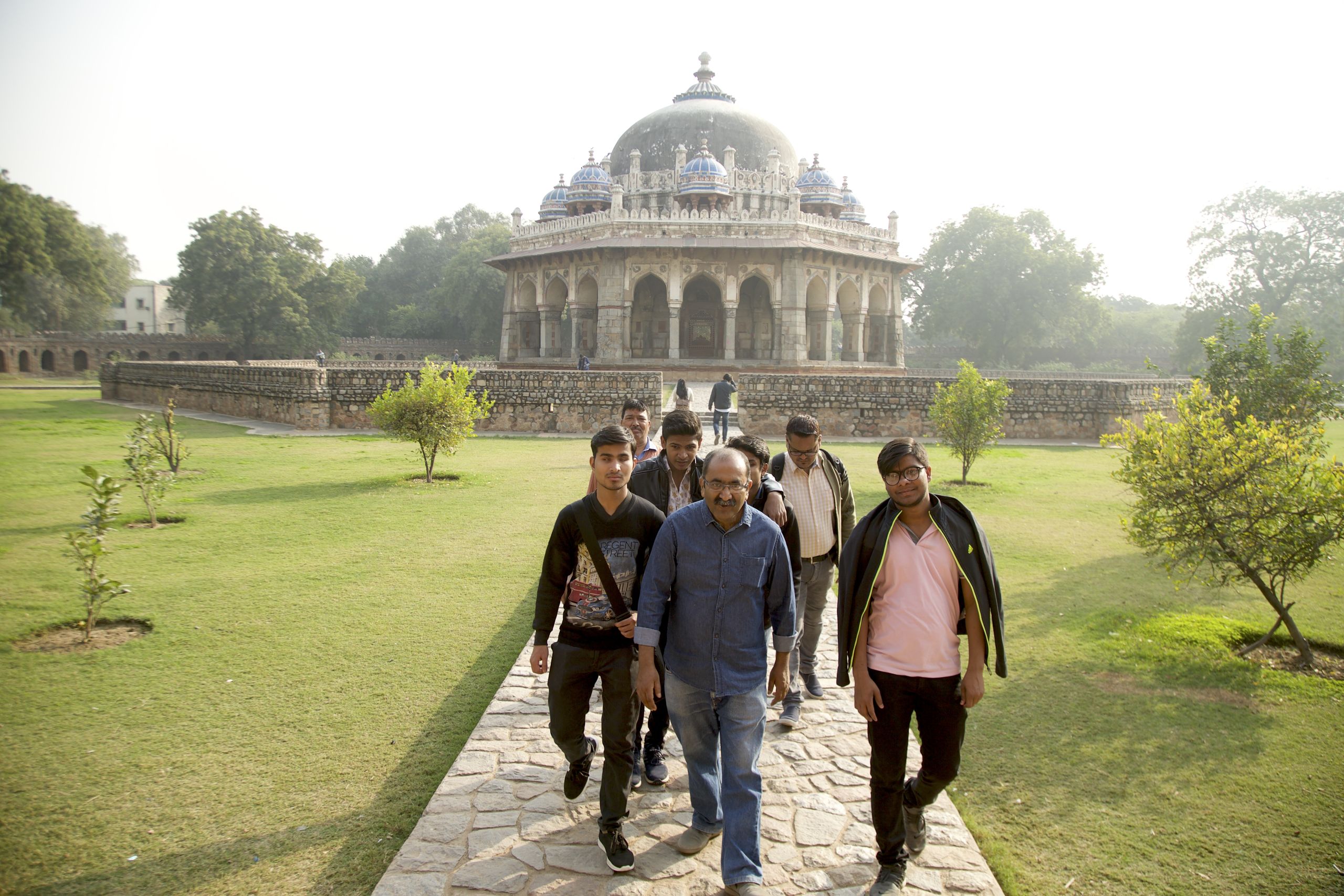
“We are blind, yes we can't see much, but that doesn’t matter. We should never feel that we should hold back because we are blind. And we should never give up in life, no matter what problems may come, we must face the problem.”
– Aditi
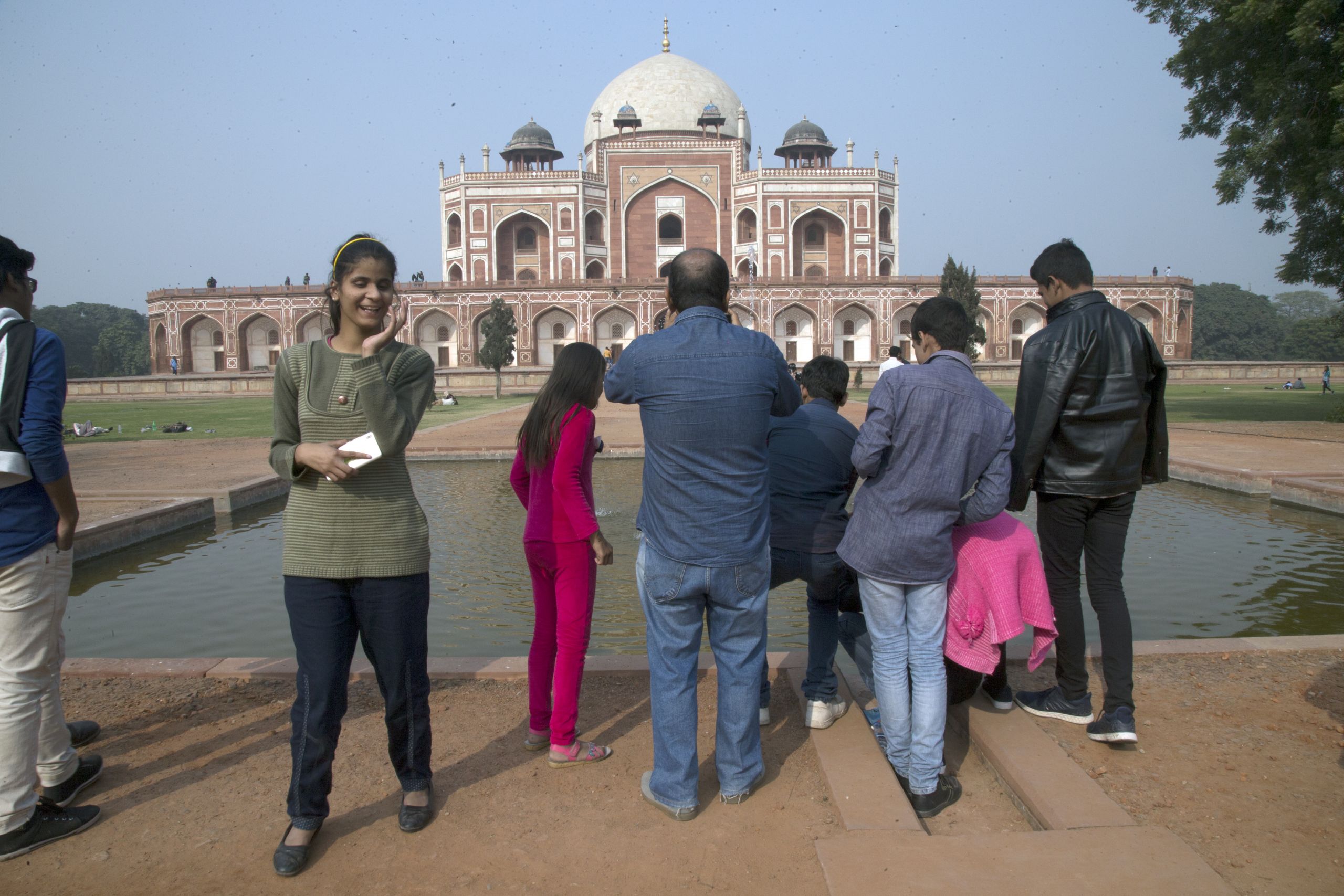
"Blindness is a disability but if you are talented and you have the ability to do a particular thing and you break the challenge... go face to face against it, then you will surely achieve it."
– Ayush
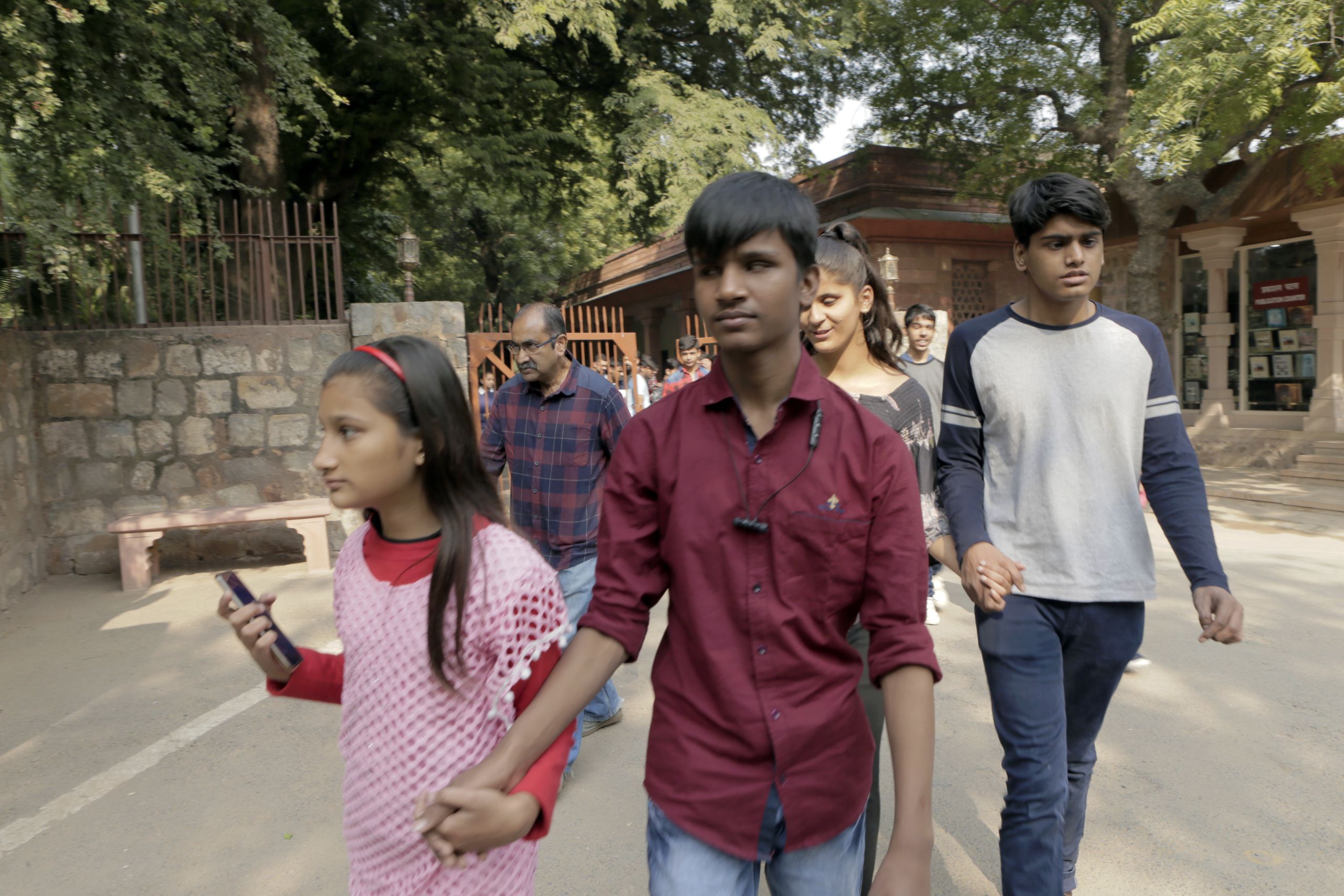
“They have embraced blindness ... and their work resonates French philosopher Jacques Derrida’s concept that “in blindness, the true art exists.”
– Partho Bhowmick, See As No Other, 2015.
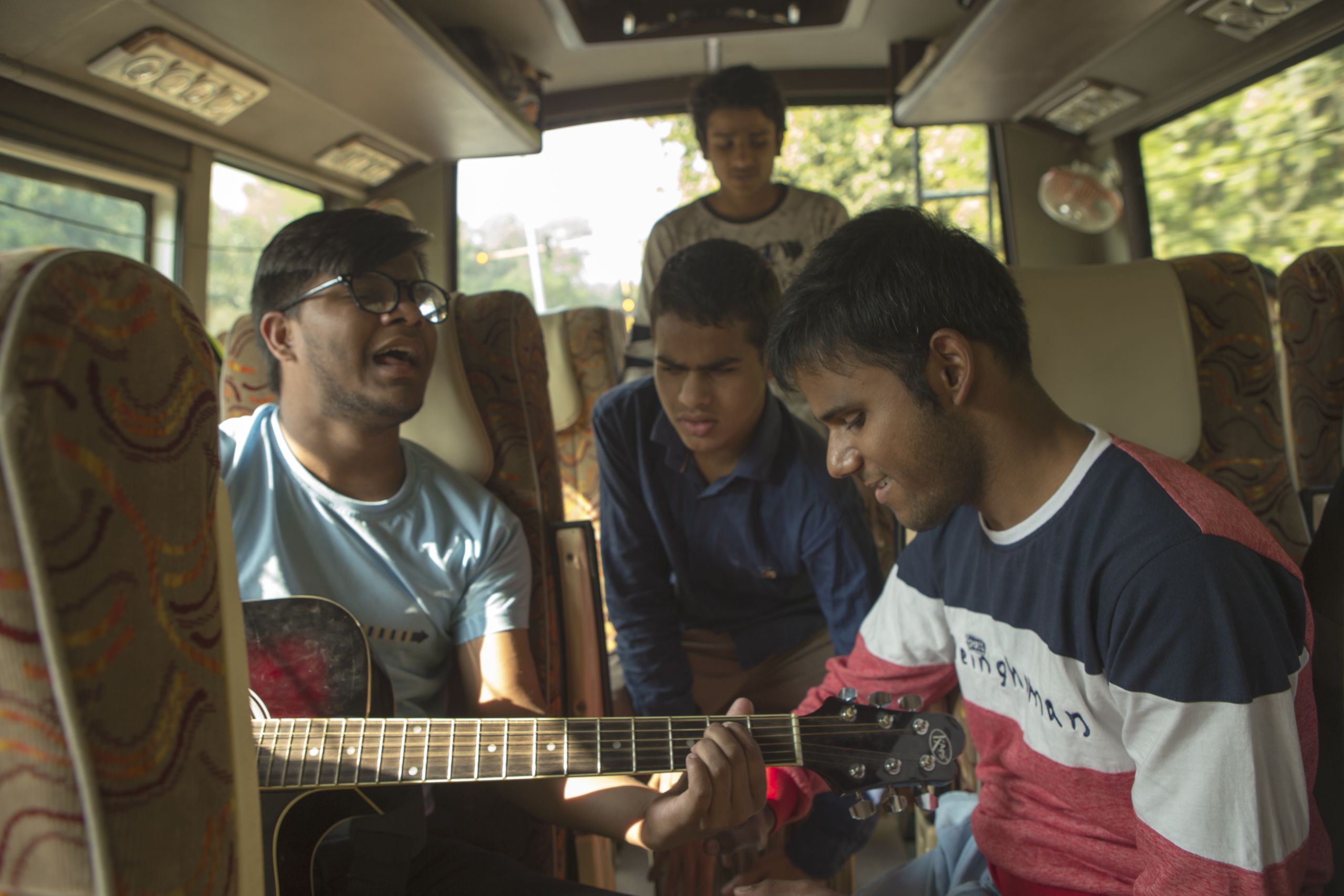
Archana Borhade
Photography
Sharon Pereira, Rani Jeyaraj & Von Tan
Producers
Sharon Pereira & Chris Annadorai
Writers
Chris Annadorai
Executive Producer & Content Designer
